
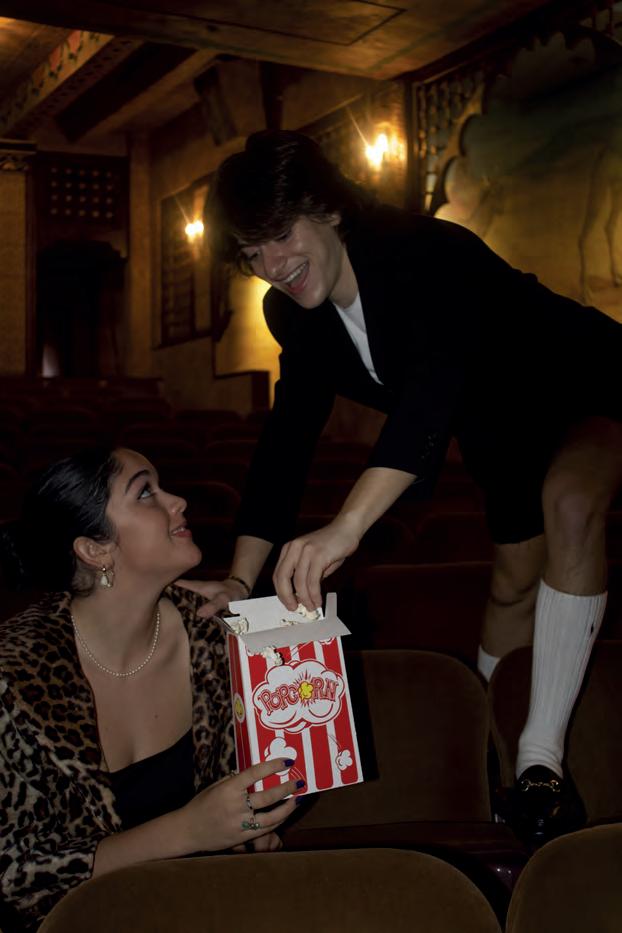
Katya EchazarretaProfle Y2KSpread ASundayattheGarde AccessibilityandArt FastFashion ProductofCulture Fashion: BarbaraBordnickProfle TrendyVersusTimeless HeavenbyMarcJacobs Fashion “LoveBall” MeettheTeam
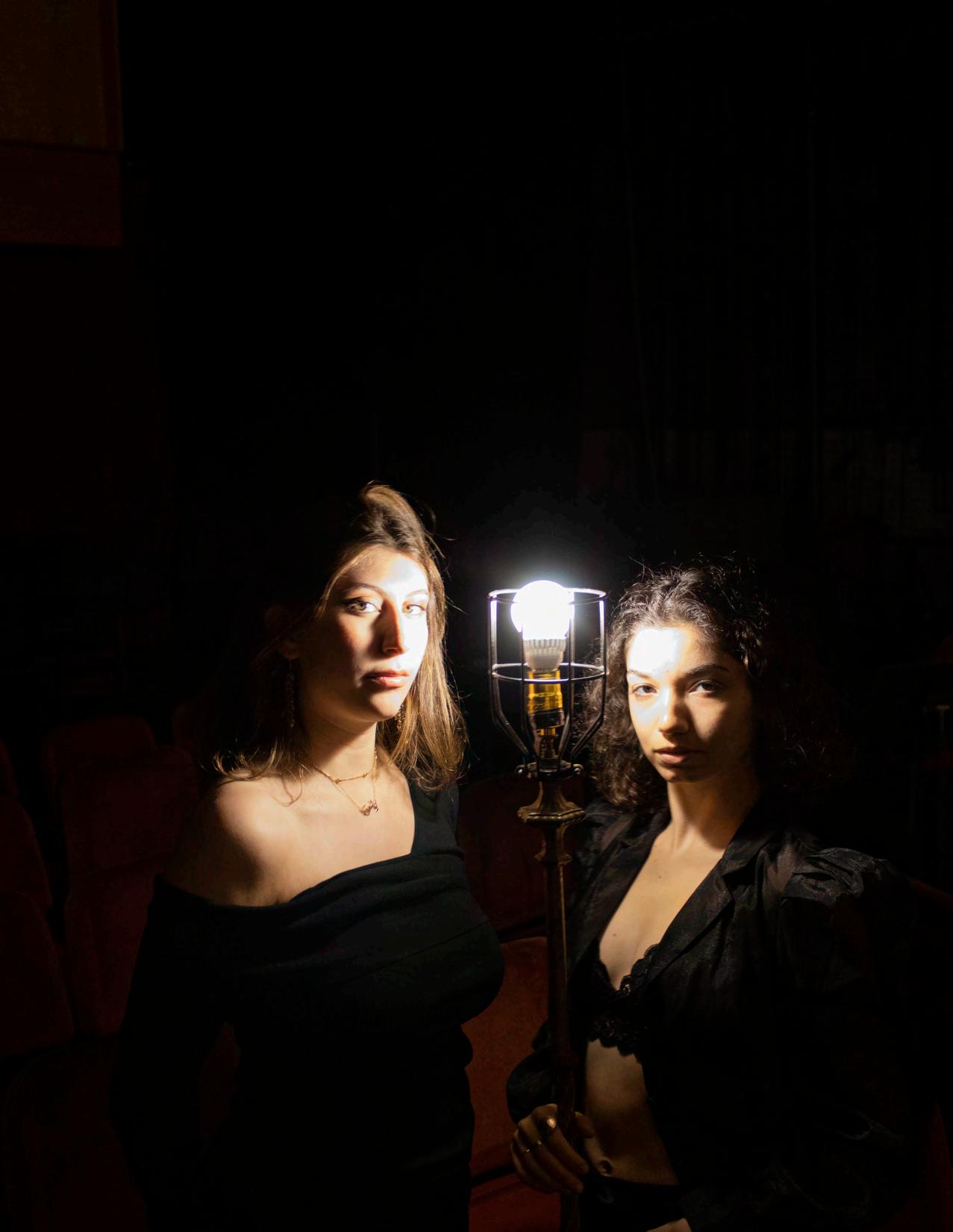
By Kendrick Hawkins
student models, stylists, and photographers took over the rest of the theater.


met
hired in 1988 Jeanne; the
You haven’t really been to downtown New London if you haven’t been to the Garde. Since my frst year at Connecticut College, I dreamed of doing a photo shoot inside the magnifcently surprising theater. That dream came true in the fall of my senior year. On a Sunday afternoon in October, I had the pleasure of chatting with Jeanne and Steve Sigel in the Garde’s downstairs lobby while Steve Sigelwas tobethe Garde’sfrstexecutivedirector.Thatwas whenhe restishistory! Jeanne,nowMarketingandDevelopment Director,hadbeeninvolvedwithand
heart;she grew wasdrawn to you to
up townand itsquirkyand diversecommunity.“Thereissomething thatcallsto to London,”saidinourconversation. New
TheGardeArts is
in1926. With its architecture andvastprogramming, thanjusta community.
since its
unique,Moroccan theater. It
Center is what as a
the GardeTheatre is
hasstood more
dedicatedthe specialplace visitingthe come 3
callsmeto NewLondon;ithasthatindescribablebut universalappeal.Itstrong birth theGarde
toGardesince1986.New Londonhasalwayshelda inher she
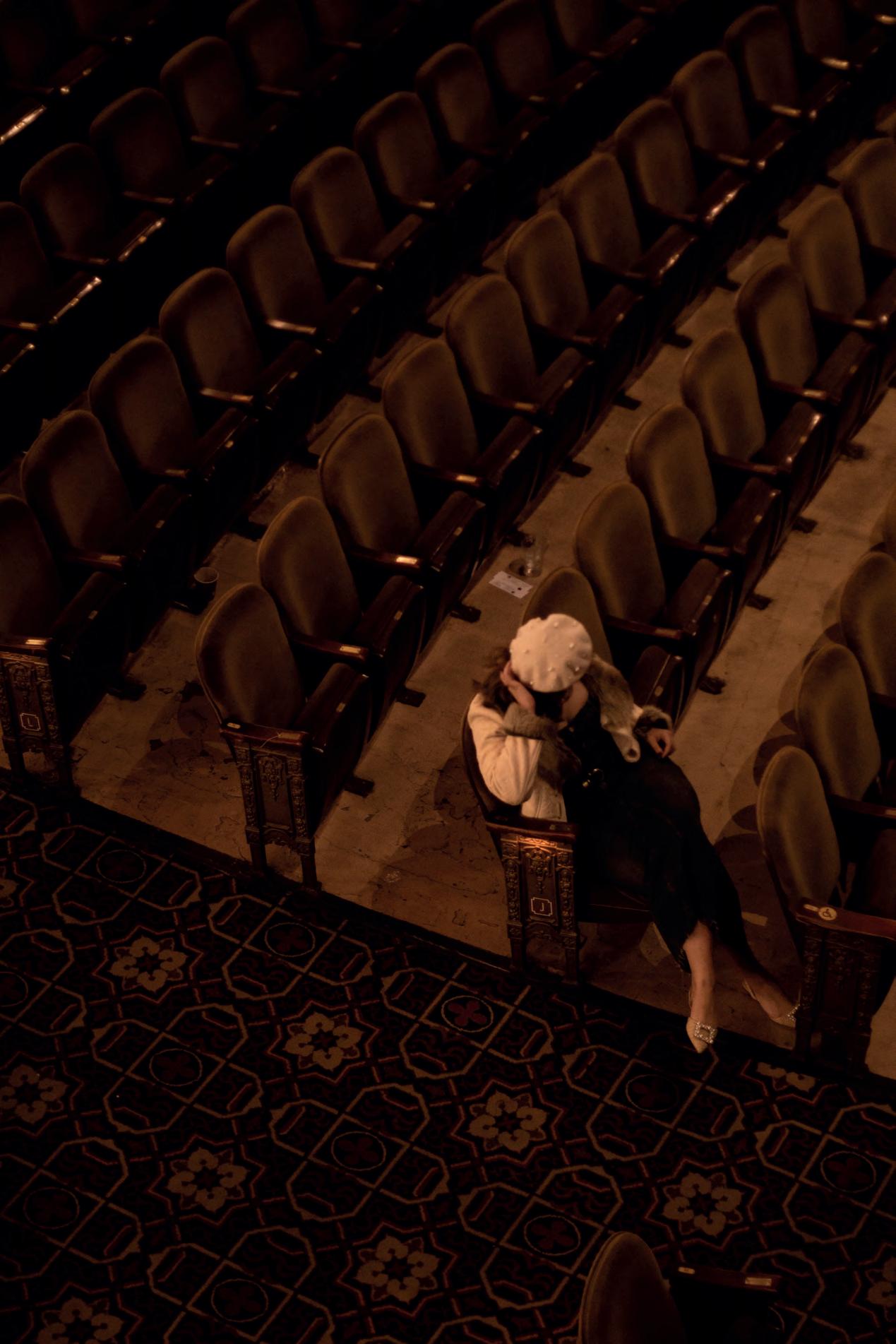

In order to save the historic building, the Garde
Theatre became the Garde Arts Center in 1985 when the non-proft performing arts
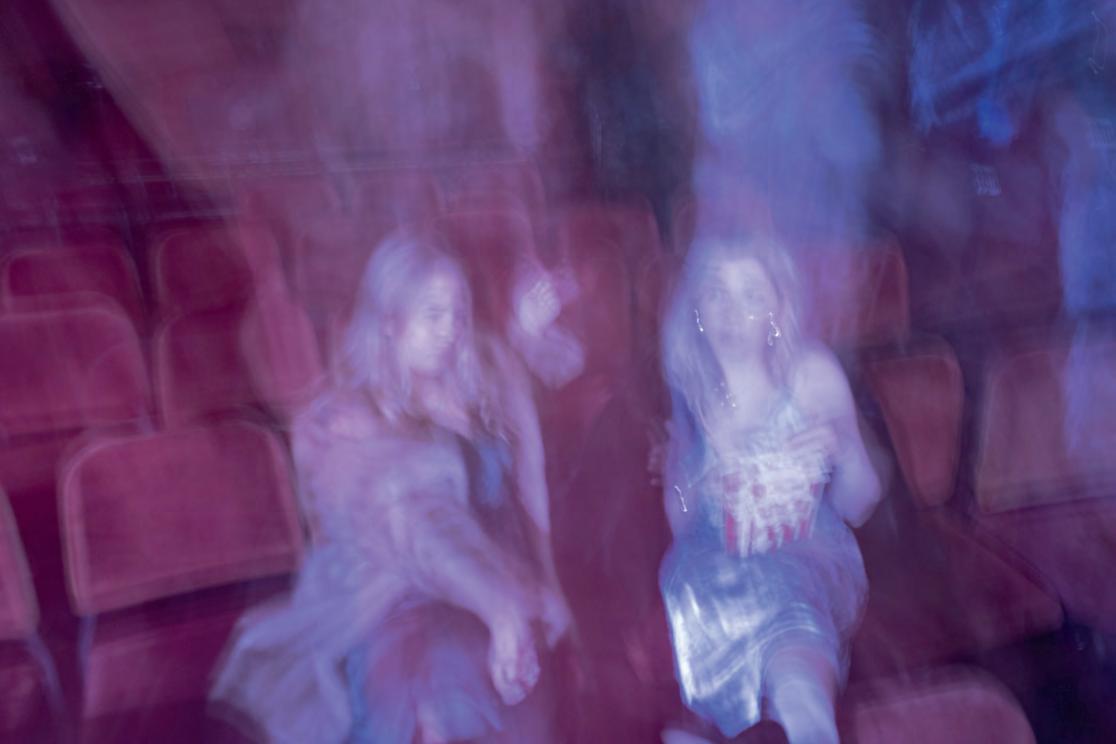
organization was created. With this new title came a new meaning. The Garde will be remembered not for what it shows (albeit some spectacular performances) but for what it does for the community.
During the pandemic, the Garde housed a drop-in learning center for New London students. Education could continue, and students had a safe space to grow when everything else was coming to a halt. The “Six Pack” met every week to strategize how to acquire state and federal fnancial support. Even though people stopped going out for dinner and a show, the Garde knew its patrons would be back soon enough. That meant working tirelessly to be sure the theater would be waiting for their return.
In response to my question about the Garde’s future, Steve mentioned the staff’s addition of a managing director, Jennifer Zembruski, for the frst time in thirty years. The goal is to ensure depth in the management; the theater must remain at the core of the New London community. “The theater is the stable energy feld while everything around it keeps changing,” Steve said. Locals can always count on the Winter Cinema Series, year-round concerts, and countless other events. The Garde is a cultural epicenter for New London, and it isn’t going anywhere. Neither are its leaders. Jeanne assured me,
6
AcessabilityandArtand
 By: CharlottePodeszwa
By: CharlottePodeszwa
The
comer evolution of
museumsaren’tnecessary. inthe
up Detroit, from economic disaster to an arts,the city has a lot to ofer and
Detroit,oftenconsideredtherustbelt capital,wasonceAmerica’sengineof economicgrowthaftertheGilded Age.Itsmeagerbeginningsasa
manufacturing city was only a jumping off point of its glory days as one of the wealthiest cities in the United States and a cultural hub. Henry Ford’s creation of “proft sharing” or what would now be known as a “living wage” created economic equity amongst the working class. The prospect of a better life drew families
across ethnic and racial backgrounds to Detroit and with them a rich cultural diversity. In the late 1960’s, however, race riots drove many citizens to the suburbs leaving Detroit plagued by disinvestment and racial tension.
Although I grew up in Dallas, my parents ensured I always appreciated the city of my
birth, Detroit. I knew the Detroit Institute of Art held the Detroit Industry Murals by Diego
Rivera and was the frst museum in the United States to purchase a painting by Vincent van Gogh - both underwritten by Edsel Ford, son of Henry Ford, but what I didn’t realize is that these pieces were only the beginning of what Detroit art has to offer.
Detroit’s comeback is a multifaceted traditionally associated with spurring innovation. After years of economic demise, Detroit looked to the arts as a means of

discussion where industrial innovation and art are constants. As cities across the US focus on attracting business and investment creating economic growth and putting the city back on the map.
economic growth, Detroit is taking cues from its rich cultural diversity as a means of
Detroit, ranked one of the poorest cities in America, fled for bankruptcy in 2013 after 60 years of a population exodus to the suburbs. This resulted in the loss of over half of its population. Left behind were blighted neighborhoods, dilapidated warehouses, and the remanence of a motor city. These buildings needed to be used, and public spaces needed to be activated to allow for foot traffc to increase. It was vital for Detroit to get people out of the suburbs and high income areas, and into those that may not be as ‘pretty,’ where working-class families resided. I decided to interview Becky Scarcello, another Detroiter who decided to leaned into her fascination of the city she loved in 2012 when she joined the staff at Feet on the Street Tours Detroit, a company with the goal to help others explore.
8


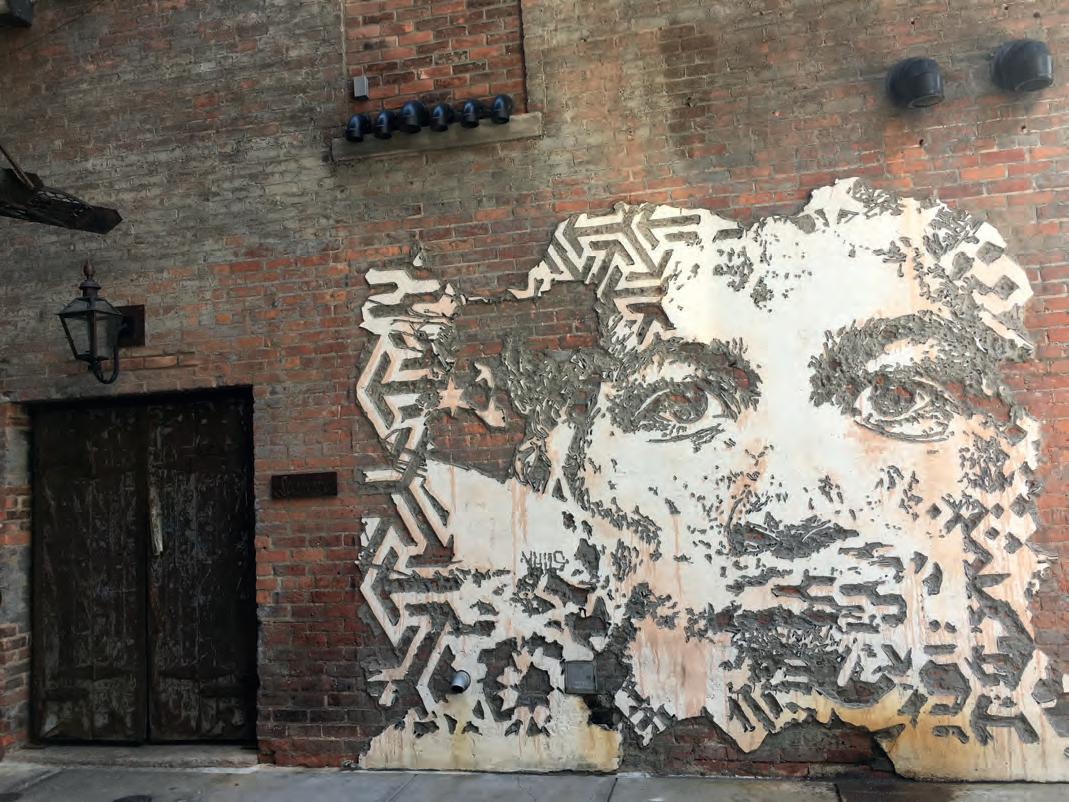
cityandworkswithcompanies,foundations,and nonproftorganizationsfocusingondevelopment andimprovement.
The city of Detroit holds over 500 public murals installed to create interest and attract visitors to the city. Scarcello’s tours are run out of the Eastern Market, a place of produce sales, art markets, and community gatherings. In discussing their impact on the community, Scarcello explained,”[the murals] are a whole new way to look at art… they are less intimidating.”
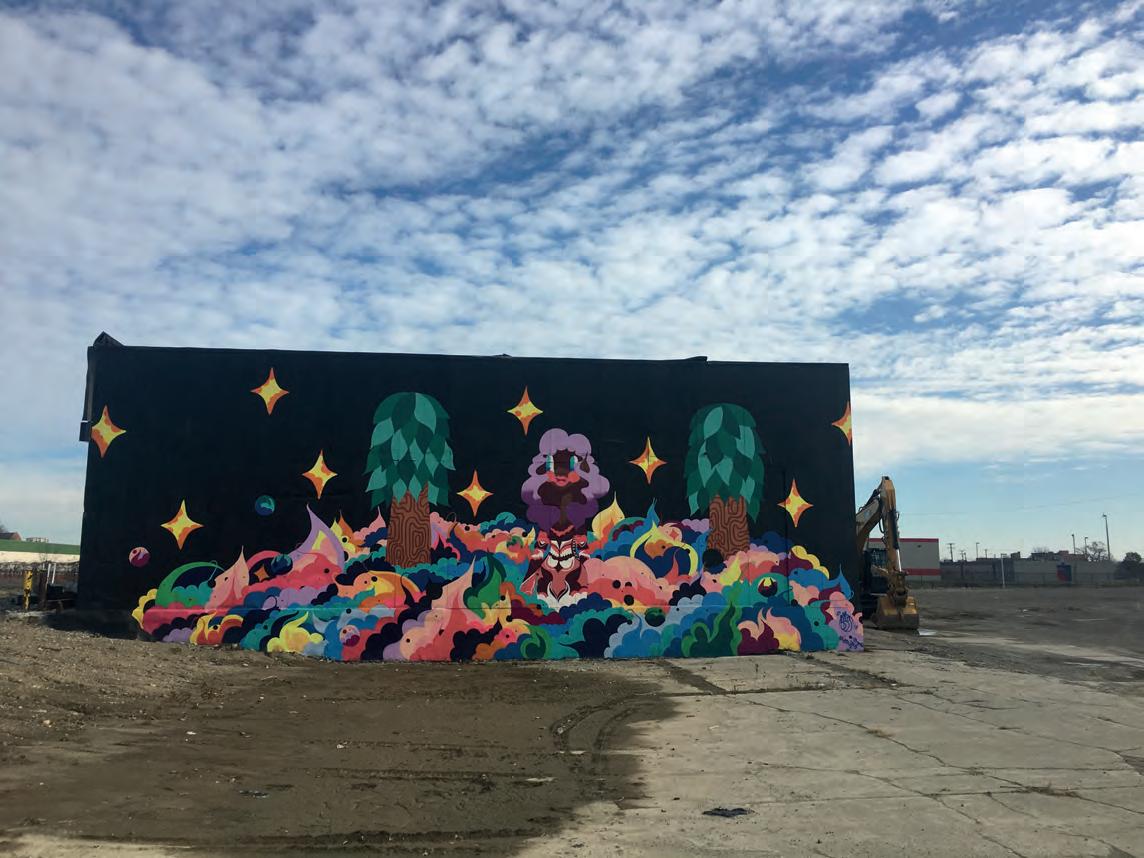
Accessibility of the arts has always been a debate but in cities with a diverse range of incomes “you have people who will never walk through the landscape. “Detroit is huge” she explained “some areas seem sketchier than others but murals draw you in.” The murals have the ability to increase foot traffc in blighted neighborhoods because
doors [of a museum], they have a barrier to entry” meaning there is a population of people in the city who won’t fnd themselves surrounded by art, unless it can be integrated in the urban they “increase [the concept of] safety because someone cares.” Attendees of Scarcello’s tours are from all over, but there seems to be a 50/50
young, the old, well known and new muralists” Scarcello turned my research to the government, which isn’t something expected when looking at art, but “a key piece to the growth of art in Detroit was the government.” Detroit not only created a small business loan program to increase economic traffc, but the creation of the Dequindre Cut, a bike path connecting the Eastern Market to Detroit’s newly renovated waterfront. The city curated
project has expanded to creating a department specializing in Arts, Culture, and implementing art tactically was during the 11
Entrepreneurship (“ACE”). ACE facilitates artistic expression and helps foster a sense of pride and community that recognizes how art creates value for all. A good example of the city
visiting from other parts of the US and globe. She discussed a change in the commentary of those of whom she hosts in the city, the awareness of the depth of art and culture held within them is increasing but her goal is still “getting people to meet the community.” The art surrounding the Eastern Market was “intentionally made an expansive representation of the city and those who reside within it, the all granted space to make their art, but the rest of the art scene in Detroit, still holds the hierarchy that is seen everywhere.
well known street artists, which are recognisable by many within the city, as a means of mitigate tagging and improve safety along the trail. This strategy acknowledged the value of street art to its citizens an how we as society “are evolving to see art, and its integration into cities, as an effective tool to help us see the world
differently.” Scarcello continued, that “without art our world would kinda suck.” Scarcello talked in because people are intrigued“ by places
about how the evolution of art was not the only changing business in Detroit but the food and music scenes have evolved as well. People are drawn to the city due to a multitude of factors. The authenticity of the city and grit is what she fnds to be a consistent thread that pulls people
that aren’t like disney world.”
“People are drawn to the concept: you can make a difference here,” Scarcello said, discussing how the downtown area has found its footing but others continue to push outward. The government’s work to enhance culture and
diversity in the city has created fexible laws and
cheaper start-up costs, when compared to
citieslike
tohad
happen,”Scarcellonoted.Thisallowedfor riskierconceptsforrestaurants,businesses, artists,
NewYork.“Because [thecity]wassuch a mess,innovation Chicago and
and nownumberoffashion designerstofourish. a growing
In 2015, Detroit became the frst and only city in the United States to be named a UNESCO city of design. “The city holds the highest concentration of commercial and industrial designers in the country,” in part because it has “continued to dominate in automotive and industrial design.” The Cities involvement in the arts is recognized as a major proponent in the honor because of its ability to foster innovation and exploration in the arts and culture scene.
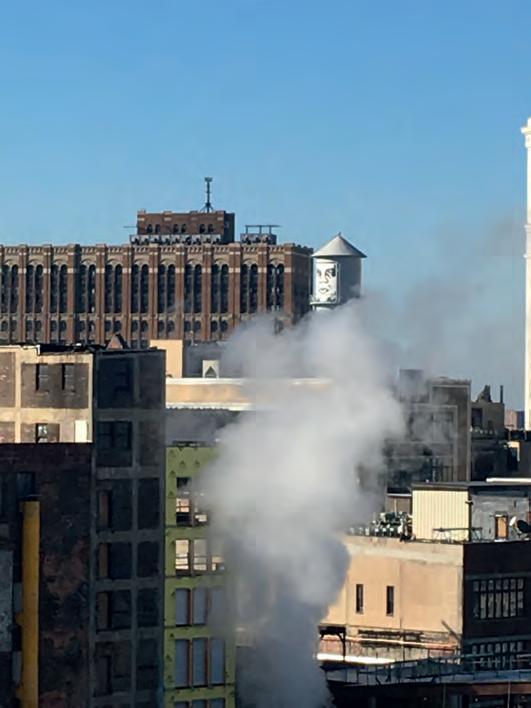
Next stop fashion? I asked Becky Scarcello what scene she believed was next to be tapped in the evolution Detroit, the food scene had been discussed, art and music as well, but she stated, “fashion is what to watch.” Clothing produced in Detroit by natives seems to be coming as vintage clothing is taking grasp on multiple generations, meaning that the manipulation of these textiles is also being found within designers in Detroit. The fashion is escaping the borders of the city as well, which was discussed in a New York Times article. Two sisters most recently flled a shipping container with works from some 50 artists, based in Detroit, to show them in New York. Don’t Sleep on Detroit, is not only sharing art but pushing the next growing subject of interest, street ware. The sister duo, Cassidy and Kelsey Tucker, who recruited the artists to the show, are fashion designers and working to create clothing exclusively made in Detroit. They are not the frst and do not seem to be the last that are now pushing art in Detroit towards something wearable. Yet their
pilgrimage to New York with their works not only helps their brand but calls notice to the industries of Detroit. Detroit may be in its most defning era because of its willingness to lean into art and allow for an accessible museum to be made of its urban waste, celebrating where the city came from and making people question where it is going.
12
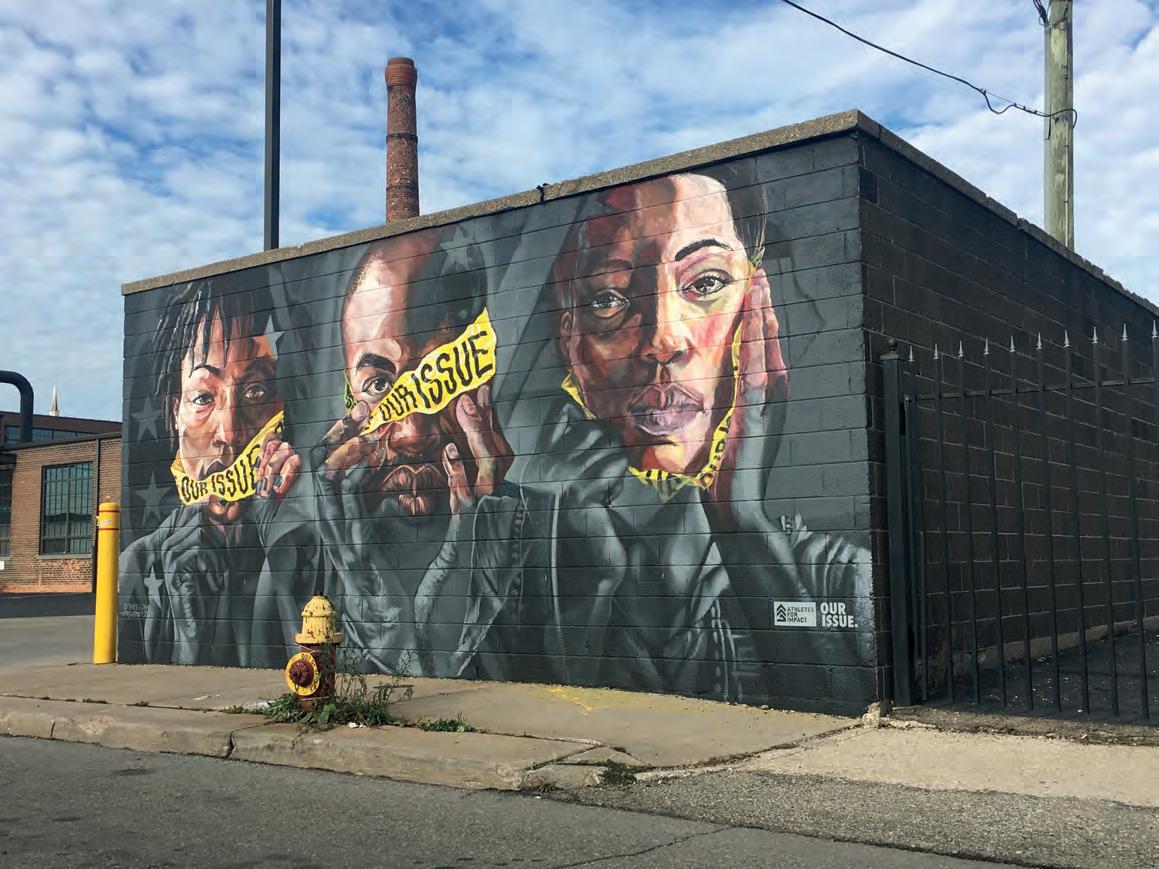
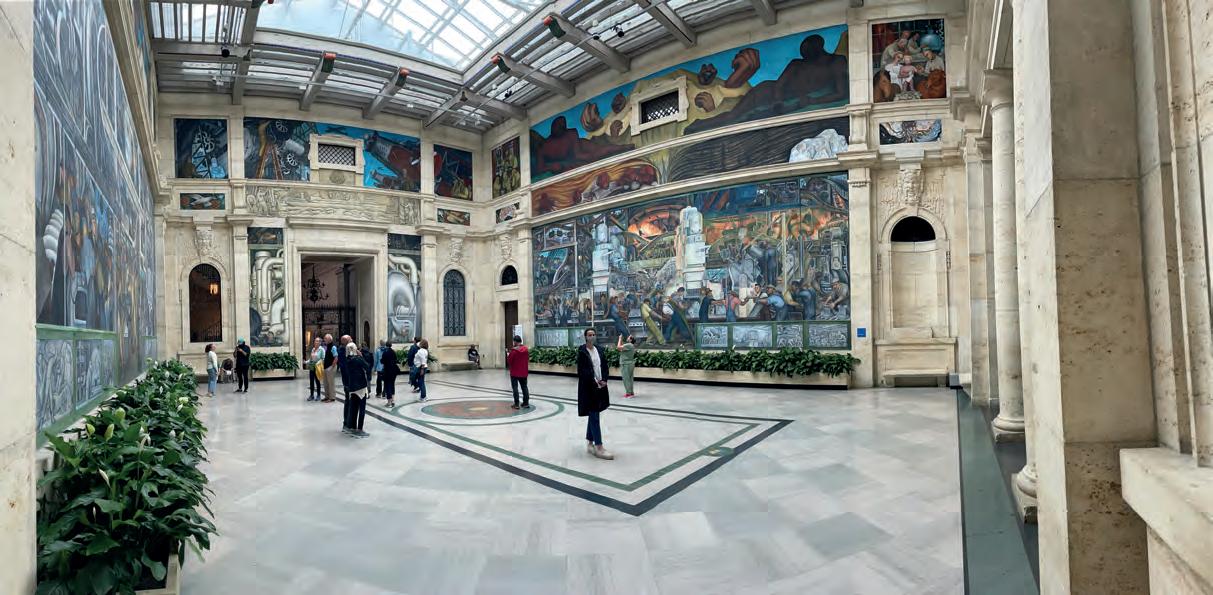 ByStephanieRuiz
ByStephanieRuiz
now the frstMexican space. Katya is one of themany board the ffth mannedfight

totravelto Blue to transportationcompany,
the
KatyaEchazarretais the
woman got aerospace
Katya Echazarreta was chosen from 7,000 applicants by Space for Humanity (a non-proft organization that
selects leaders from around the world to experience space fight with the goal of changing their perspective


on the world upon their return). In Katya’s case, it is not a matter of luck or chance; she fts the role as a
representative leader of Mexico in her industry. Her
story is one of which effort and dedication extend down to her family ties and roots. Her family emigrated from Guadalajara, Mexico, to the United States when she was just 7 years old. Growing up in the US was very diffcult for her because of the language barrier, but this made her work hard and never give up. According to Katya, her mother was her biggest supporter. She always pushed Katya to pursue her passions. Katya says, "For her, the most important thing was that her daughters were independent because she couldn’t be. She always wanted to have a career, she always wanted to study, and they didn’t let her, her husband didn’t let her, her father didn’t let her. And that is why what she wanted most in her life was that the same thing not happen to her daughters. So from the day we were born, my mom taught us to be independent, strong women and not to care what people said. The reality is that I thank my mom for everything. My mom is the reason I’m here.”
Katyaknewfroma young age that shenotonlywanted toworkforNASA but also traveltospace.Katya graduatedfromtheUniversity ofCaliforniawitha degreeinElectricalEngineering. Soonafter,shebegan herprofessionalcareerwith aninternshipatNASA
born people who of lucky Origin,on 14
which eventually led to a full-time job as a member of fve missions in which she worked as a test engineer. Her job was to design electronic circuits and simulations for spacecraft computers. Many have said her true greatness comes straight from her curiosity; it seems to be inexhaustible. According to multiple interviews, curiosity is always the root of why she chose her career path. Katya says, “For me, curiosity is not being afraid of questions, not being afraid of not knowing something. That’s the beauty, you can investigate and fnd the answer, but I feel that many people are afraid of not knowing, of being given a project and not knowing how to do it, of being asked a question and not knowing how to answer it. A lot
14
NS-21mission.
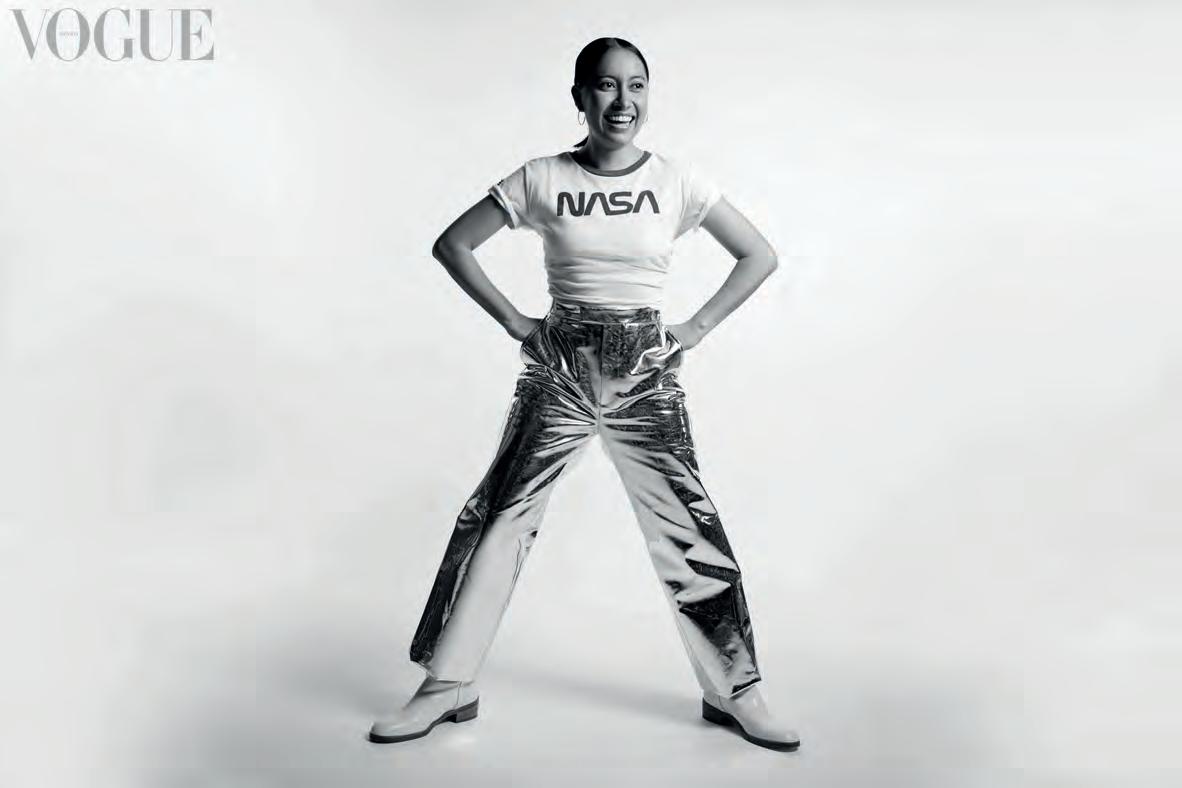

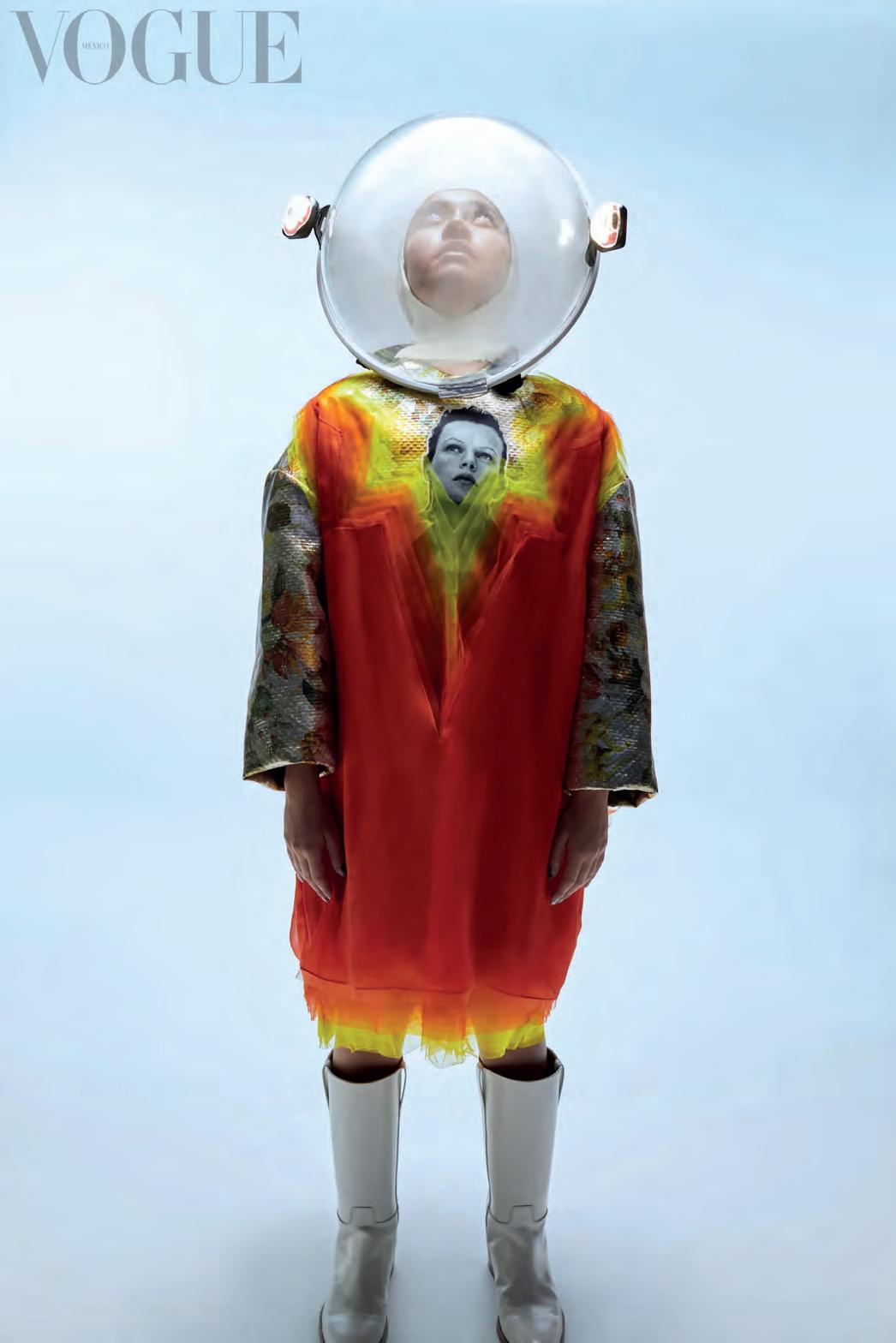 Photos by Santiago forVogueMéxico Sierra Soler
Photos by Santiago forVogueMéxico Sierra Soler


1989,ByBy1989,
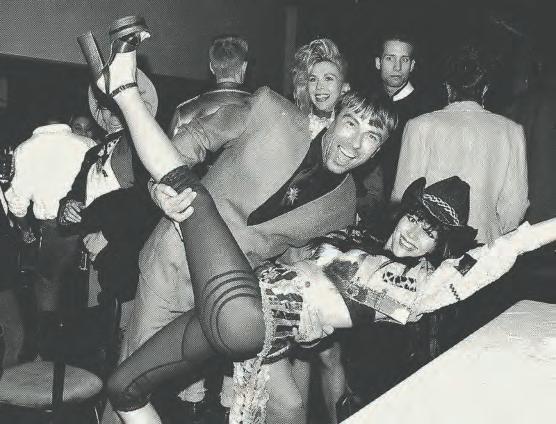
had reached a peak. AIDS was at its height of public interest, and with the formation of the now-famous AIDS quilt and plays like Larry Kramer’s “A Normal Heart” gaining popularity, the epidemic was at the forefront of news and media coverage across the country. By 1989, the number of reported AIDS cases in America had reached 100,000, and people were struggling to remain hopeful. AZT, the frst drug approved by the FDA to treat AIDS, had been on the market for two could not afford it or could not afford to cope with its many devastating side effects.
Queer communities in large cities like New York and San Francisco were hit hardest by the epidemic, and in addition to the virus itself, social stigma surrounding AIDS was causing people to be denied housing, education, and healthcare.
years but proved toxic and extremely expensive. The communities who needed the drug most
However, by the mid-late 1980s, members of these communities began using art as an outlet to express frustration, grief, and creativity surrounding the epidemic. Artists like photographer and New York S&M scene contributor

Robert Chesley, abstract painter Keith Haring, and many more coped with their diagnoses through their art. One of these artists, Susanne Bartsch, New York City nightlife frequenter and eclectic Soho shop owner, decided to put her pain toward passion with her now
“Love Ball”. “Love Ball”.
famous
Robert Mapplethorpe, playwright
SuzanneBartschand Love Ball1989. at ThierryMugler 17
theHIV/AIDScrisisinAmerica
chievingiconstatus,especiallyinthe fashionindustry,isnoeasyfeat. Yet SusanneBartsch’sroleasaNewYork City aonlyminiscule fashioniconis part of her identity as fashion curator and producer. This makes the act of defning Bartsch nearly impossible, simply because she defes most, if not all, labels placed upon her. Who is Susanne Bartsch? Recognized for her thick sunglasses, glamorous updos, and ethereal features, Bartsch’s unique style only hints at her even more unique personality. She is a relic of new age New York City nightlife, a curator of and an extravagant being in the world of fashion. eclectic, creative, and dynamic party atmospheres,
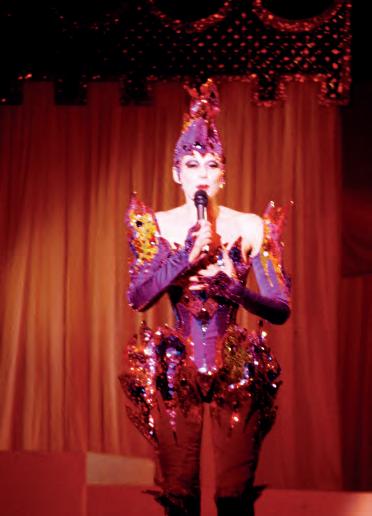

After moving from Switzerland to London networking with curators in the underground fashion world and opening signifcant New York City nightclubs, such as Savage located below the Chelsea Hotel, that put her on the map. Everyone who was anyone attended a hub for queer culture and expression
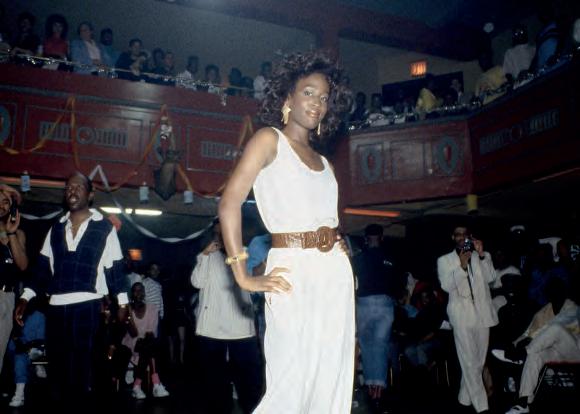
at age 17, quickly catapulting herself into the fashion industry, Bartsch began novelty boutiques in SoHo. However, it was the creation of her parties at Bartsch’s events, and her parties became through avant-garde fashion.
After losing many close companions to AIDS, Bartsch created her most widely recognized event in 1989, the star-studded Love Ball. Inspired by the longstanding tradition of drag balls within the queer community, Bartsch decided to host a large drag ball to raise money for HIV/AIDS research. Reclaiming life and love, the Love Ball allowed for artists and creatives to be big, bold, and glamorous in a time when glamour was often scarce. This fundraiser event, which rallied together the fashion community in awareness for those suffering with AIDS, raised $400,000 during its duration. The legend of the Love Ball rained with an additional two iterations since the frst, Love Ball II in 1991 and Love Ball III in 2019.
 DragBall,1988. Harlem.
DragBall,1988. Harlem.
19
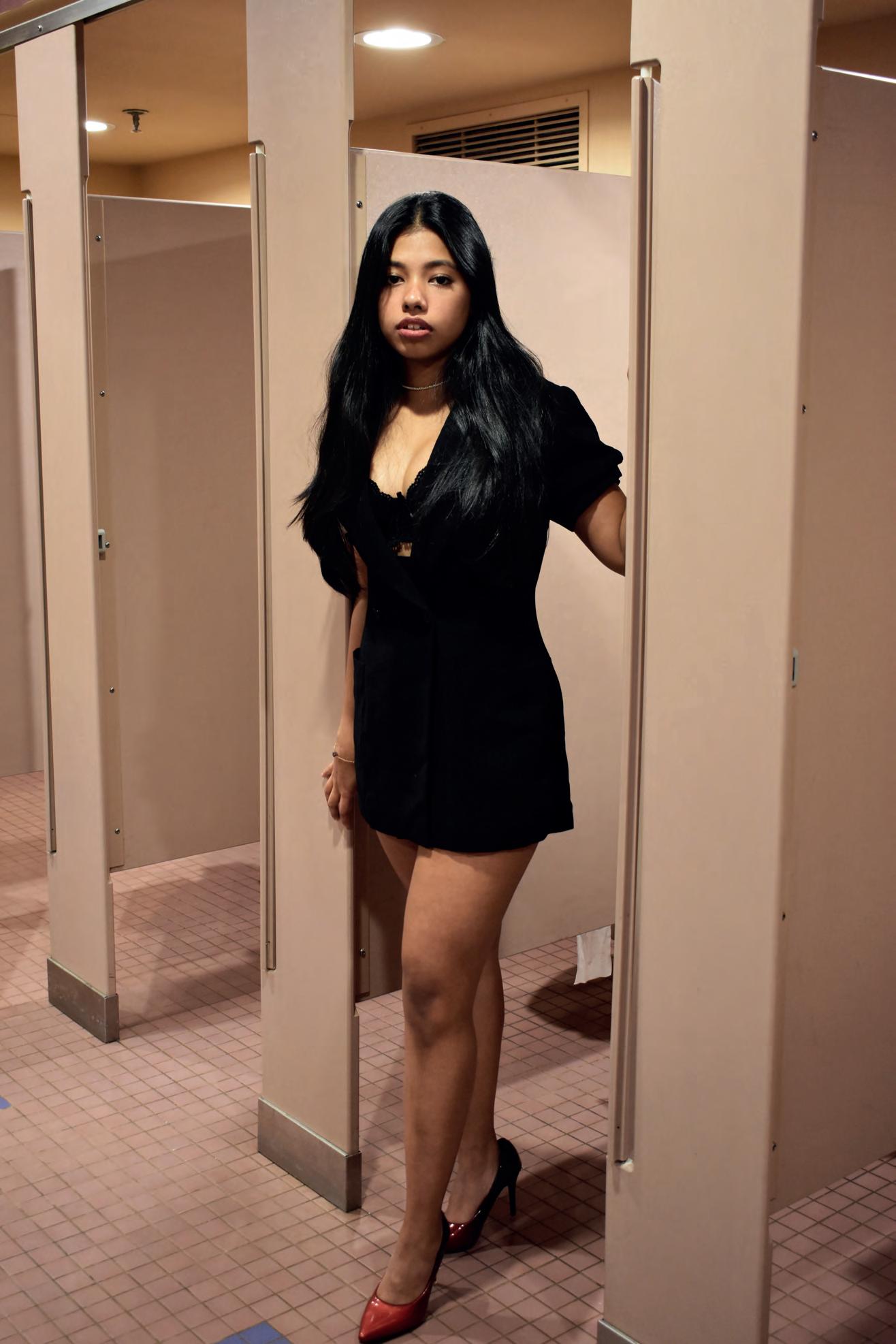
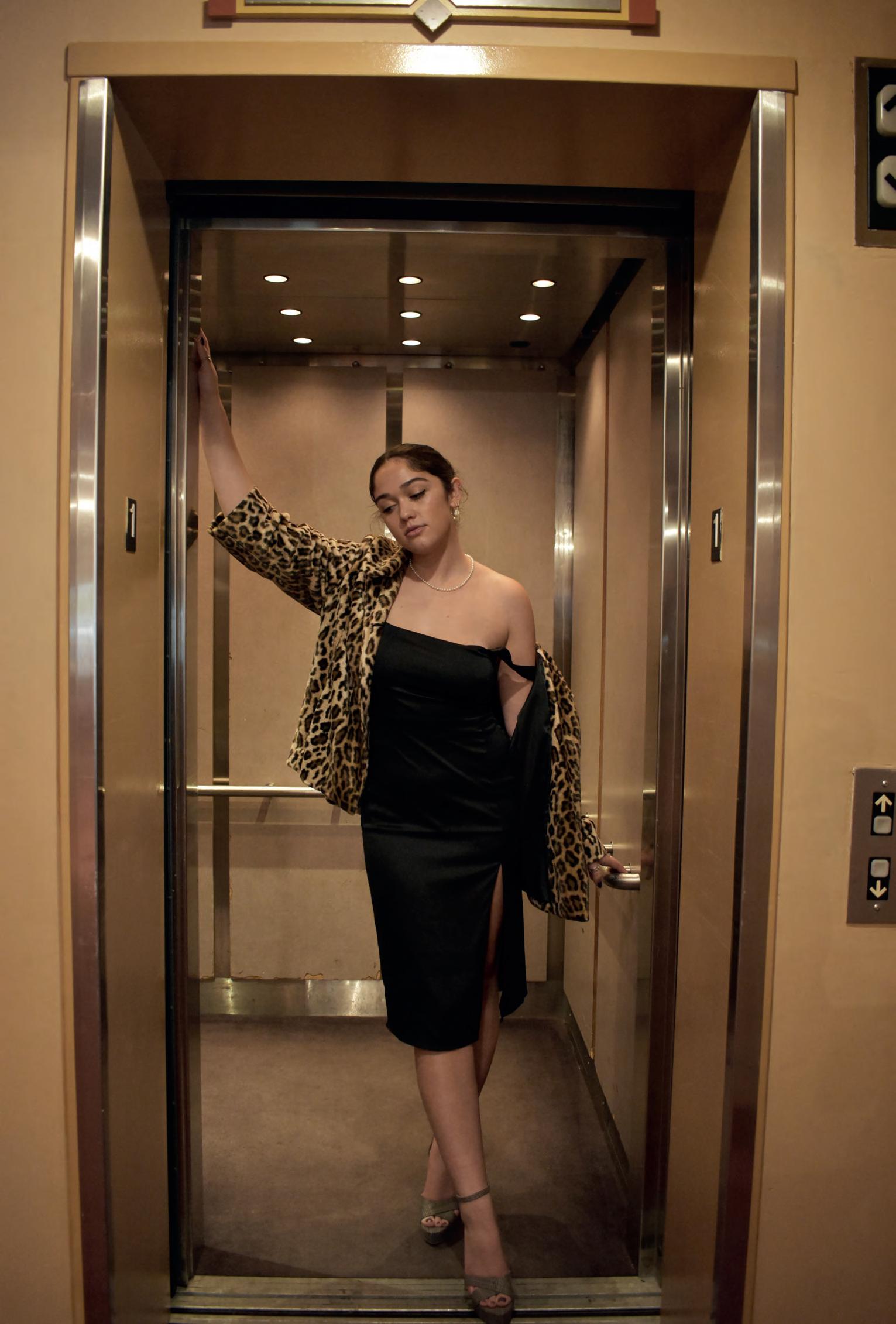


to Isheavenby goinghell? Marc Jacobs
Devon Middlebrook by
Heavenby Marc Jacobs, launched in late 2020 during the height of the coronavirus pandemic, was an immediate hit with Generation Z. Marc
Jacobs describes his own brand as, “drawing upon the origins of the Marc Jacobs impulse:
subversion, teenage daydreams, alienation nation, queer youth, toxic shock valley girls, candy ravers, apocalypse sugar, psychedelic fantasia, girls who are boys and boys who are girls, those who are neither, negative space, day-glo dystopia, suburban euphoria, and the multifaceted characters who have made up the Marc Jacobs universe for the past 30 years. Heaven centers the D.I.Y. spirit that connects subcultures around the world and recontextualizes them for a new
generation." Jacobs has been working tirelessly on making Heaven the cool and on-trend brand. An intense marketing campaign was launched
with Gen Z icons such as Bella Hadid, Iris Law, Dua Lipa, Rex Orange County, and Bladee. Subcultures became fooded with baby tees of double-headed teddy bears, sweaters with harajuku inspired graphics, and the now iconic kiki boots. Recently, Heaven’s hype has been falling and the brand is losing popularity with its Gen Z audience. Its ethics and sustainable practices have been brought into question, as well as its authenticity and legitimacy as a subculture brand. Can Heaven, a brand emerging from a major fashion conglomerate, truly capture the essence of subculture?
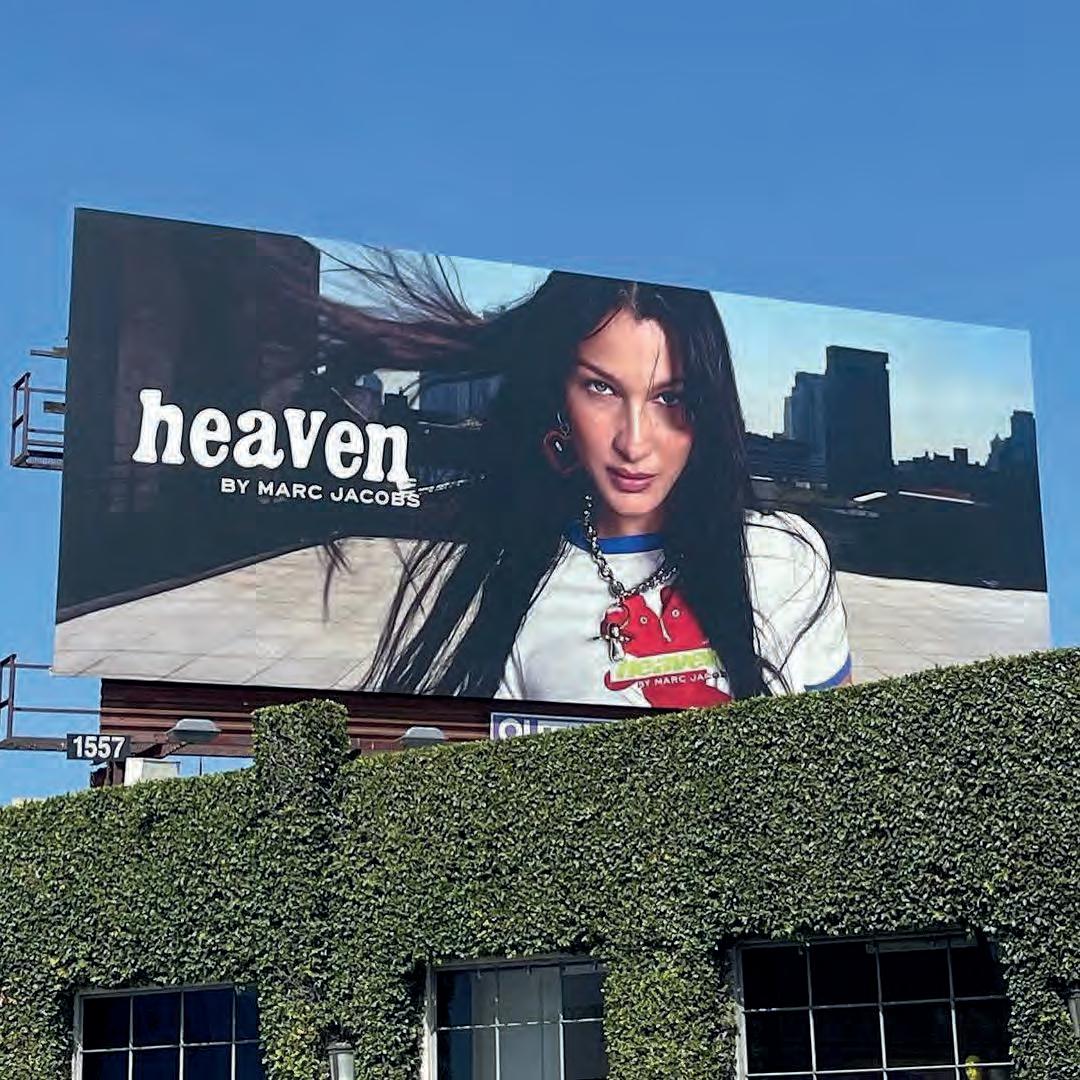
Tiktoksurgedinpopularityduringlockdownas peoplesocialdistancedandstayedindoors avoidspreadingCOVID.Manyyoungpeople discoverednewonlinesubculturesand
to
24
experimented with aesthetics. With nowhere to go and nothing to do, they spent their time shopping online. Aware of this, Marc Jacobs was the frst major fashion house to capitalize on these trends and create a luxury ready-to-wear
brand. Jacobs created his frst Heaven lookbook in collaboration with Shoichi Aoki. Aoki is the creator of FRUiTS Magazine, a Japanese fashion
magazine dedicated to capturing the underground street style (such as lolita, grunge, and gothic styles) in the Harajuku district. The original proponents of Harajuku style DIY’d clothing pieces or thrifted them. Harajuku icons captured the fashion world’s attention through their strong sense of personal style and creativity, and FRUiTS was the bible of anti-conformist style in Japan. Heaven provided a way for customers to buy into a subculture without having to do the leg work of thrifting or making pieces themselves. Those looking to differentiate their style were drawn to Heaven, as it presented any easy way to buy a sense of style and stand out. Heaven promised a sense of individualism.
subcultures they are advertising to. Jacobs is far too disconnected from these underground subcommunities, read as overpriced knockoffs. It is impossible to create a unique style while mass-producing items. Critics have described Heaven as being the brand worn by upper-middle
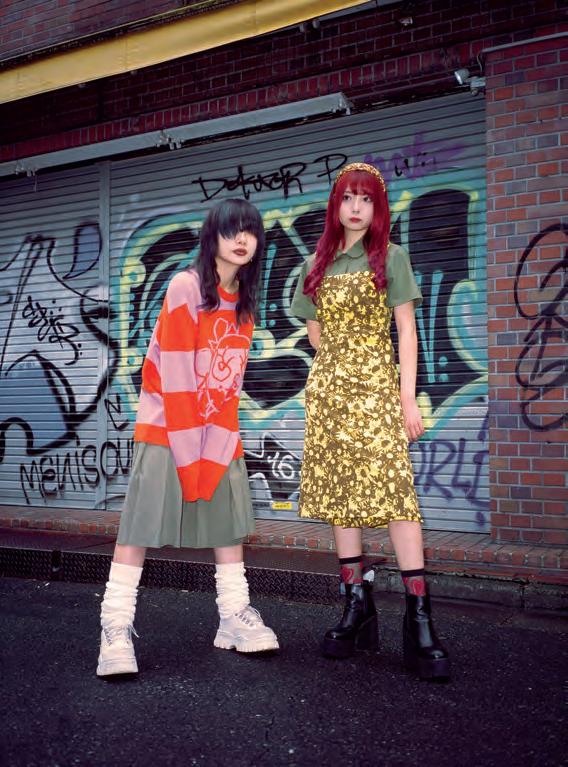
subgenres to accurately understand them. Heaven’s designs, to those existing within the class teens who purchase easily thriftable pieces for hundreds of dollars. This increasingly popular
sentiment is going to hurt Heaven, whose backbone is being the brand worn by the effortlessly cool kids. Accessibility is key to
subculture, and Heaven isn’t. Others have stated
Style can’t be bought, and subculture can not be authentically recreated for mass consumption and high profts. If anything, Heaven is more an exercise in genius marketing tactics than a brand of unique style. Coolness can’t be manufactured, it is something which authentically exists within people who push the bounds of creativity and are heavily involved with their own communities. Jacobs can only make Heaven cool for so long, and in the words of Shoichi Aoki, “there are no more cool kids to photograph."
Heaven turning their skin green and materials
Heaven’s designs are extracted, without the same spirit or creativity, from the pioneers of the that the subcultures heavily referenced (such as harajuku and Y2K) were pioneered by people of color who are not properly represented in advertising nor on Heaven’s team. Especially at its high price point, the quality is severely lacking. A post on social media went viral of jewelry from feeling cheap and poorly constructed.
Heavenisnottransparentabouttheirfactory conditionsandwhethertheworkersarebeing compensatedfairlywhileclaimingtobe environmentallyconscious.Thesecriticismsheavily erodethe“coolness” of asanythingtrying tooto outfavor. of Heaven, hardbe cool is going to fall
Photos by PopSugar
25
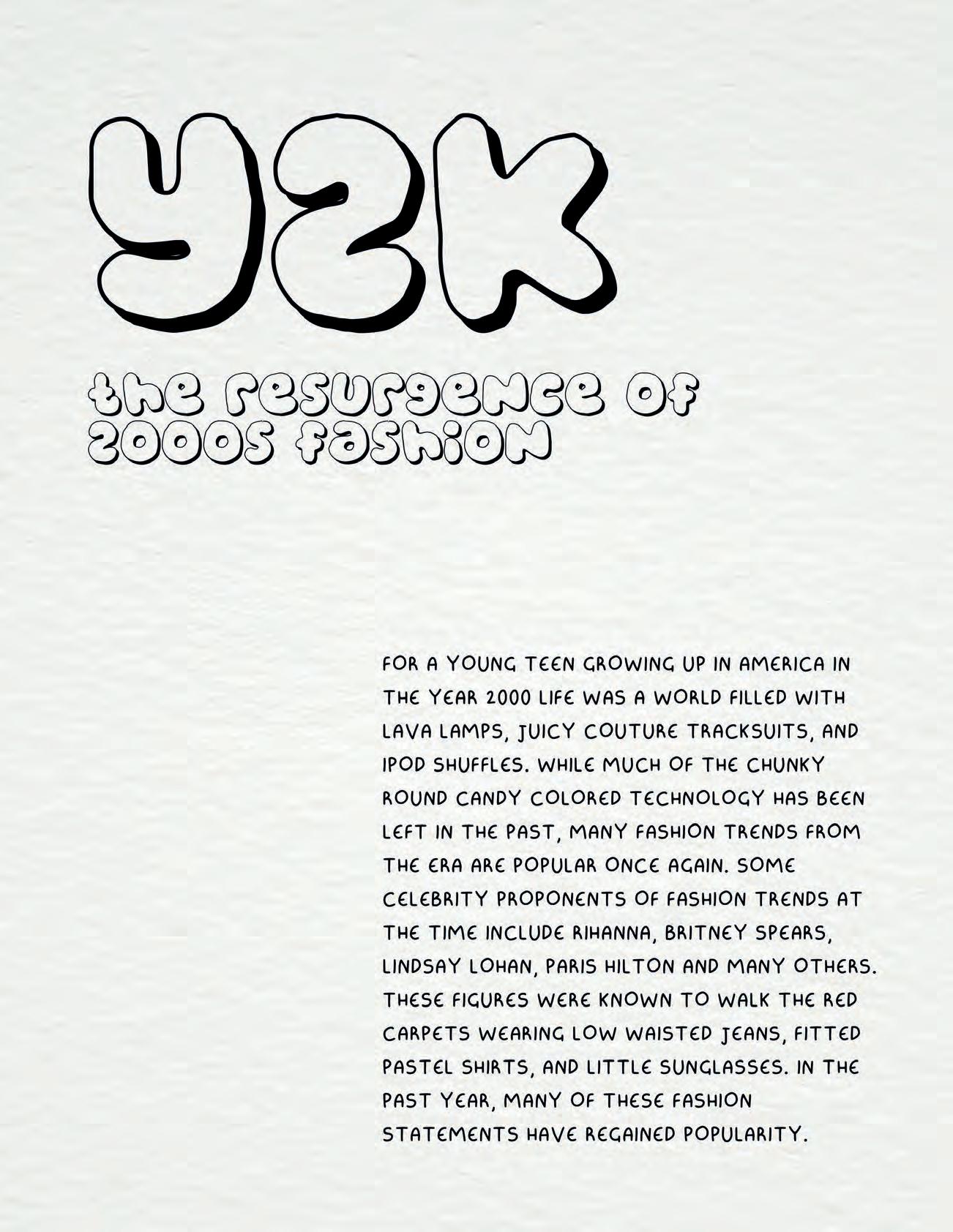
26

27
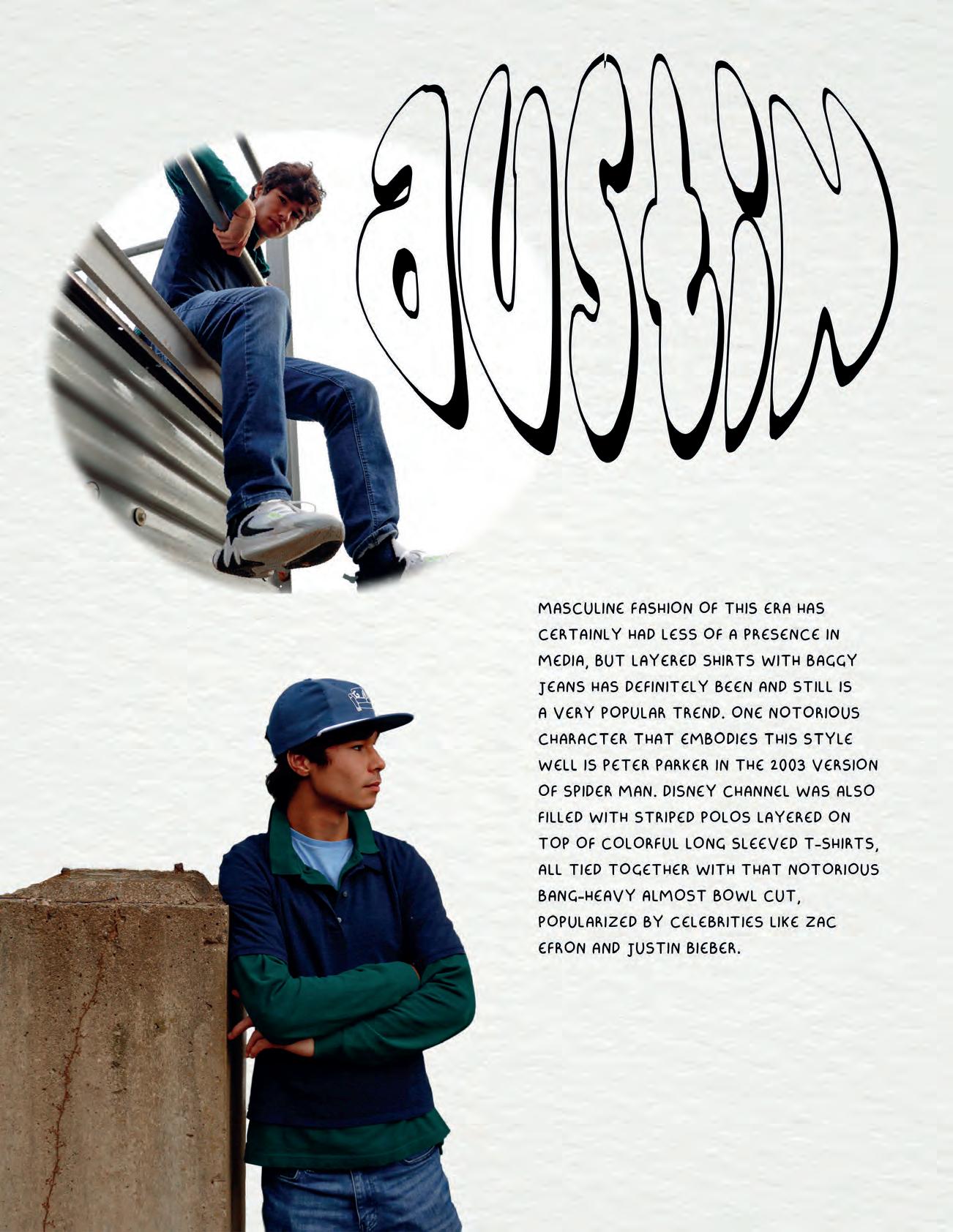

29

CAELONSHUGRUE 30
What makes fashion, fashionable, and to what extent are social norms and capitalism just as important as elements of design? A designer must create a beautiful piece, but if it isn’t in style or isn’t marketed as “trendy” people won’t buy it. Like all pieces of art, fashion is subjective. Yet to what extent do we allow others to tell us what is “fashionable” without exploring it ourselves?
Elements of design such as color theory, texture, pattern, rhythm, and much more are used by the designer when making a piece. Designers must understand how colors complement each other and what feelings those evoke. They must also consider what textures and materials will look good with each other as well as how the structure of the piece will fatter the features of the wearer.
Fashion works to tell people what you are like; it is the frst thing someone will take notice of. In many instances, fashion is used to faunt how rich people are or how powerful. For example, in the Victorian era, wealthy women wore corsets and full skirts. Even in paintings of rulers, from Napoleon to Queen Elizabeth I, their portraits depict them wearing the elaborate fashion of the time to display their wealth and power. We also wear different types of clothing in different job environments. A Home Depot employee at work won’t wear the same thing as the CEO. The employee’s orange uniform makes them easy to spot for customers who need help. The CEO, on the other hand, informs people of his/her wealth and status through their clothing. This also brings us to how clothing has been used to differentiate social classes.
Beauty standards and fashion are always intertwined, as the ideal body type is often what
the fashion at the time caters to. For example, in ancient Greece the ideal body type for women
was plump and full-bodied. During the Italian fat-chested. The everchanging ideal fgure is then exacerbated by fashion, which is made to
Renaissance the ideal woman had a full body: full hips, bosom, and stomach. In contrast, the ideal woman in the 1920s was slim, boyish, and fulfll the ideals of the time. Beauty standards as well are cultural norms impact what is considered fashionable so, as cultural norms change, fashion follows suit.
In conjunction with capitalism, the industrial revolution changed fashion permanently. Clothes
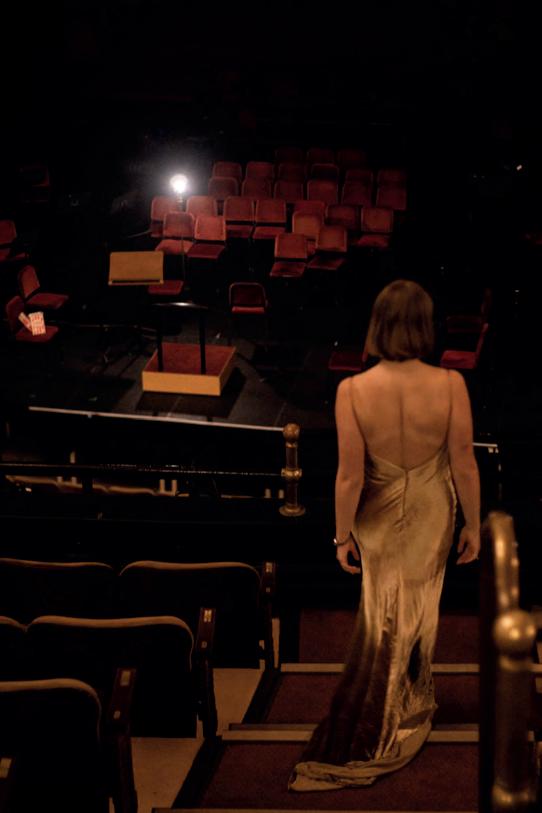
became more readily available and cheaper, but also lower quality. Producers like Shein mass produce clothes that result from micro trends that people will only wear a few times, as opposed to much earlier when people would
make clothes that last a lifetime. The capitalist and consumerist culture, especially in the Western world, works to sell more clothes by preying on the basic human desire to ft in. Brands create trends and advertise them via social media, commercials, celebrities/infuencers, ect. to make it seem like we can be just as
popular or liked if we buy the clothes or products. The emergence of micro trends is a mechanism of capitalism to make people think they have to buy new clothes all the time to stay in fashion. With this tactic, companies make more money.
31

So, to what extent are we letting longstanding cultural/social norms, consumerism, and capitalism dictate what we think is fashionable and what we wear? Our whole lives we have been absorbing the consumerist culture that targets our insecurities just to sell products. If our entire view of fashion has been through this lens, is our view of fashion fundamentally skewed? If we like a piece of clothing, how do we know it’s not because of what we’ve absorbed our whole life?
In my opinion, there is a certain extent to which one’s clothing style gets chosen for them. Growing up, my mom would pick out my clothes. When it came time for me to pick out my own clothes, she would hand me an L.L. Bean catalog and tell me to circle the stuff I liked. To some degree, this was me fnding my own style, but still the scope of my fashion knowledge was limited. Once I got to middle school, I saw other people with trendier clothes and realized there was a world outside my own. I fell for the marketing tactic that
preyed on young girls’ desires to feel accepted; I wanted to buy clothes from Hollister or Aéropostale. By highschool, I realized that none of these styles that I had witnessed were my own. So I started thrifting my own clothes. I went through my dad’s old sweaters and my grandpa’s old fannels and explored elements of fashion that had never been marketed toward me.
So yes, you are not in control of your fashion choices at all times because we live in a society that rubs its beliefs onto us. However, a part of growing up is realizing that what one person thinks is fashionable, may not be considered fashionable to someone else. Part of liberating yourself from the constraints of societal norms is realizing that brands that market clothes as trendy are just after the money. So while capitalism, consumerism, and societal norms play as big of a role in fashion as the actual clothing, individual styles will always shine through.

33
Bordnick: Barbara
Barbara Bordnick is an internationally renowned portrait and fashion photographer whose work has been featured in The New York Times, Harper’s Bazaar, and Life. Her SEARCHINGS Secret Landscapes of Flowers books have met high critical acclaim and she has permanent collections president of the American Society of Magazine Photographers and her portrait of E.Y. Harburg became a United States postage stamp in 2005.
How LilyWeisbart: did you
getintophotography?
BarbaraBordnick:
fashion, and I was talking about the photograph. So I took a photography course. My dream was to live in Paris. That’s why I wanted to be a fashion designer, because I had this idea that if I was a fashion designer, I could live in Paris. My husband and I went to Europe and frst we stopped in Copenhagen. I was a wife in a country where I didn’t speak the language, and I didn’t know what to do with myself, so I decided to take the photographs that I had done and I went to see some photographers. They saw me, and they wanted me to do photography, but I didn’t know how to. I wanted to work with them to learn. But they sent me to this Danish
photo magazine and I went... they looked at my photographs and said, “I think we have to publish these.” Cut to some months later, we were in
Rome and there was a package for me at the post offce, and inside was this magazine with my name all over it, and I thought, “Wow, this is easy. I’m gonna be a photographer.”
I was a student in fashion design at Pratt Institute and I had never taken a photograph. One day, a classmate and I were looking at Harper’s Bazaar and we were both saying “Oh that’s so gorgeous, that’s so gorgeous”, and at a certain point I realized, she was talking about the Howdid forHarper’sBazaar? you end up working LW:
across the world. In 1977, Bordnick was elected as the frst female Currently, she is a teacher at Parsons School of Design. BB: When I got to Paris, I went to see the editor of Harper’s Bazaar, and she took me under her wing, but I didn’t get a job as an assistant. I was thoroughly unexposed and insecure and didn’t have the social experience
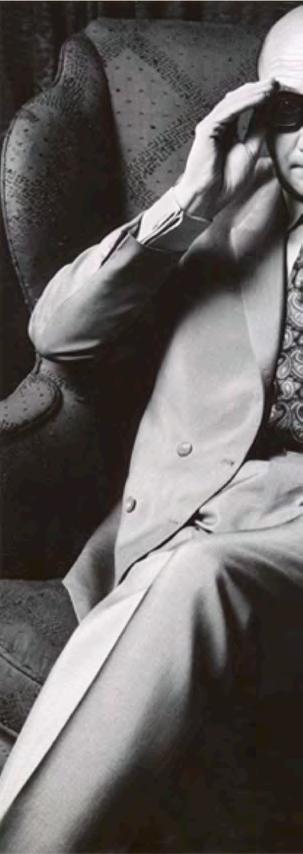
to be able to handle it. When I came back to New York, I spent six months looking for a job as an assistant. I decided to ask my husband if he could make a studio for me in our house and I started testing. I went to see Harper’s Bazaar and told them that the french editor sent me, and in those days, it cost about forty dollars to make a phone call to Paris, so they weren’t going to call and check. They saw me and they looked at my work and they said, “Oh darling, fabulous, fabulous. Do some more and come back”. They kept saying no, but one day, I got a phone call. I was shooting actually, and my client answered the phone and said “Barbara, know if I would do some photographs for them, and the rest is history as they say.
it’s Harper’s Bazaar.” It was one of those things where you say “ Yeah right, sure” and he said “No, it’s really Harper’s Bazaar.” They wanted to
of View Points
LW:
Whatis
you worked the most memorable shoot on and why wasitmemorable?
BB: I would do anything Harper’s Bazaar wanted me to do because I knew it was on the way to something else. Everyone said, “Oh, don’t do the back of the book, you’ll get stuck there.” But that wasn’t true. After I did that, they wanted me to photograph Donald Pleasence; a british actor who was in the most talked about play at the moment. I had never done a portrait before in my life and I was a nervous wreck, but he was so much fun to shoot. It’s a beautiful portrait. The lighting is beautiful. It’s a light I made myself from an umbrella and a piece of bleached cheesecloth. I made it with my mother. She sewed it for me. That was a very memorable shoot because he was so fun. I went to a lecture once and there was a Q&A afterwards and somebody asked “How did you get them to relax?”, and I’ll never forget this because it was so right; the lecturer said “You’re asking the wrong question. The question is how did I get to relax?”, and that really is what I learned from that shoot. But probably the most memorable shoot was the one of Angela Lansberry from Sweeny Todd. That was a remarkable shoot because she was a remarkable woman. That was her favorite photograph, and she was just remarkable, and it was a real test, whether I could handle anyone that great. There’s one thing about working with actors: if you can get an actor to trust you, there’s nothing they won’t do for you.
Howdo maintaining andart you balance capturing another mediumof LW:
yourownstyle?
BB: What I’m doing is fashion. A fashion photograph is about an interpretation. I was a fashion student, so I understood fashion better than any other photographer. I had a very intimate knowledge of fashion, so I had very strong feelings about it; but what I think is more important is who my woman was. The difference between fashion photographers is their point of view about the woman they’re photographing, and their point of view about women in general. I came about right after it all became about sex and I didn’t think there was a lyrical enough approach to photographing fashion. My approach was sensuous, but not sexual. There were three women, Sara Moon, Deborah Tuberville, and I, who came about at the same time, and our work was very different from the men’s. Because our work wasn’t sexy. We all had a different point of view. I don’t think it’s a matter of photographing another art form, because the art form is photographing fashion
Whatare therestofartform? the photographyapart from some differences that setsfashion
LW:

BB: When photographers think about fashion photography, they think they have to become something else. What used to happen, especially to students, was when they went about doing fashion photography they thought they had to become a different kind of photographer, and I always said to them, “look, if you’re a talented photographer, the best thing you can do is get a person, get a fashion editor, and take your photographs like you always do.” So what’s the difference? When you’re a fne art photographer you can work on your own and there is not a fashion photograph that is in existence that was done by one person. Fashion photography is done in a crew: the photographer, the assistants, the hair and makeup people, and the stylist or the editor. One of the talents of a great photographer is knowing how to surround yourself with talented people. For fashion photography, you rely very heavily on the creative people around you. You control the set, you control the idea, but the interesting part is the collaboration with all these amazing people.

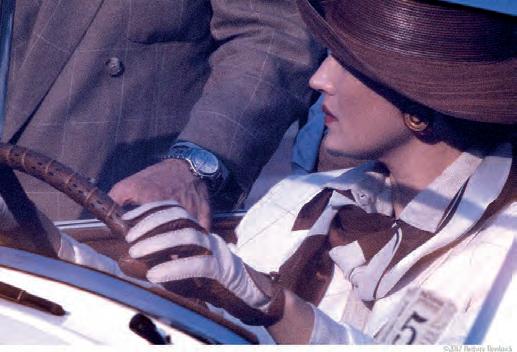
BB: There’s absolutely room, and we’re all waiting for it. I’m constantly trying to get students to see the difference between one photographer and another and to realize that almost nothing done now hasn’t been done before. There are very very talented people out there, but as far as doing something new and original, there are a few. There are always just a few. How do you get your work to not look like anybody else’s? It’s not a matter of style, it’s a matter of point of view. What makes an artist great is their point of view. Because one’s point of view is the only thing that nobody else has. You can copy a style, it will never be the same, but you can copy it. You can never copy somebody’s point of view, because a point of view is formed by your life experience, and no two people have the same life experience.
Isthere ideasinphotography? new and creativity any roomfor LW: Howhas that you teach? way the infuenced industry the your experiencein LW:
BB: That’s an interesting question. I can only teach what I know so I try to tell them what my experience was. I have lots of stories, that’s the thing they always like. A lot of the photographers I’m teaching, I knew, and a lot of them were huge infuences on me. I teach according to what my experience is. I used to teach portraiture, and I always felt like a great portrait was the result of an intimate moment between two people, so that’s how I would teach it. I would have no interest in teaching fashion photography as a skill. They asked if I would teach fashion photography, and I refused, because I’m not interested in teaching the lighting and the ‘this’ and the 'that’. It bores the hell out of me. My experience is all I have to teach, it’s all I have to offer. I wouldn’t know how to teach something that I didn’t live.
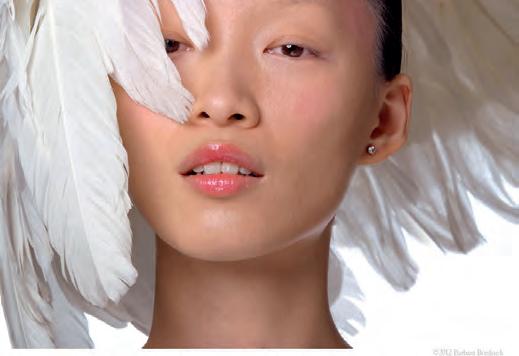 BarbaraBordnick
BarbaraBordnick
36
Photos by
FAST FASHION INDUSTRY
for as longas ofour from impact
culture
runways and everyday
an infuentialpart ourselves. the
weexpress style. However, causedmore fashionhas offast
Thefashionindustry, wecan remember,hasbeen andhow Fashion thehasinfuencedmore mainstreambrands harmthangood.
to
Sure,it may and famboyantrunwayclothingmore the also
to accessible environment and to
due detailthat cheap
make“avant but it’s alsoharmful for resourceslabor. It away theartandattention tothe industryhas
the need longstrivedfor.
constant
garde” public its takes fashion
Brands such as Zara and H&M are some of the largest contributors to this fast fashion dilemma. The main problem with fast fashion is that it uses an extreme amount of energy and is very resource dependent. Processes such as weaving, garment dying, yarn spinning, and fber manufacturing have all been shown to emit greenhouse gases, such as CO2. In small amounts, these garment making processes are okay. However, fast fashion in its simplest form is manufacturing at a fast rate in order to make as much clothing as possible. Because of this, production is constant and more and more resources are being drained. It’s important to note that the fast fashion industry has also
the industry grows and more brands emerge.Ultimately, they will always want more. In order to break this cycle,we have will be a dramatic impact on the economy.Regardless, every efforts and we should always do our best to be the change clothing madefrom timeless piecesso trends

increased the constant demand for multiple styles of clothing from fast fashion brands.
we
see.
37
Written by CarolineHamm
Theindustryhasgiven consumers a taste for thousands of styles, colors, andtextures,andthis hungerincreasesas consumerswill never besatisfed; to understandthatthere movement beginswithindividual wantto Efective ways you canlimityour impactontheenvironment: -Buysecondhandorthriftedclothing -Shoplocal -Lookfor sustainableor recycledmaterials -Investin you’renot constantlybuying
HUNGER FOR THE

TRENDYANDTIMELESS FASHION
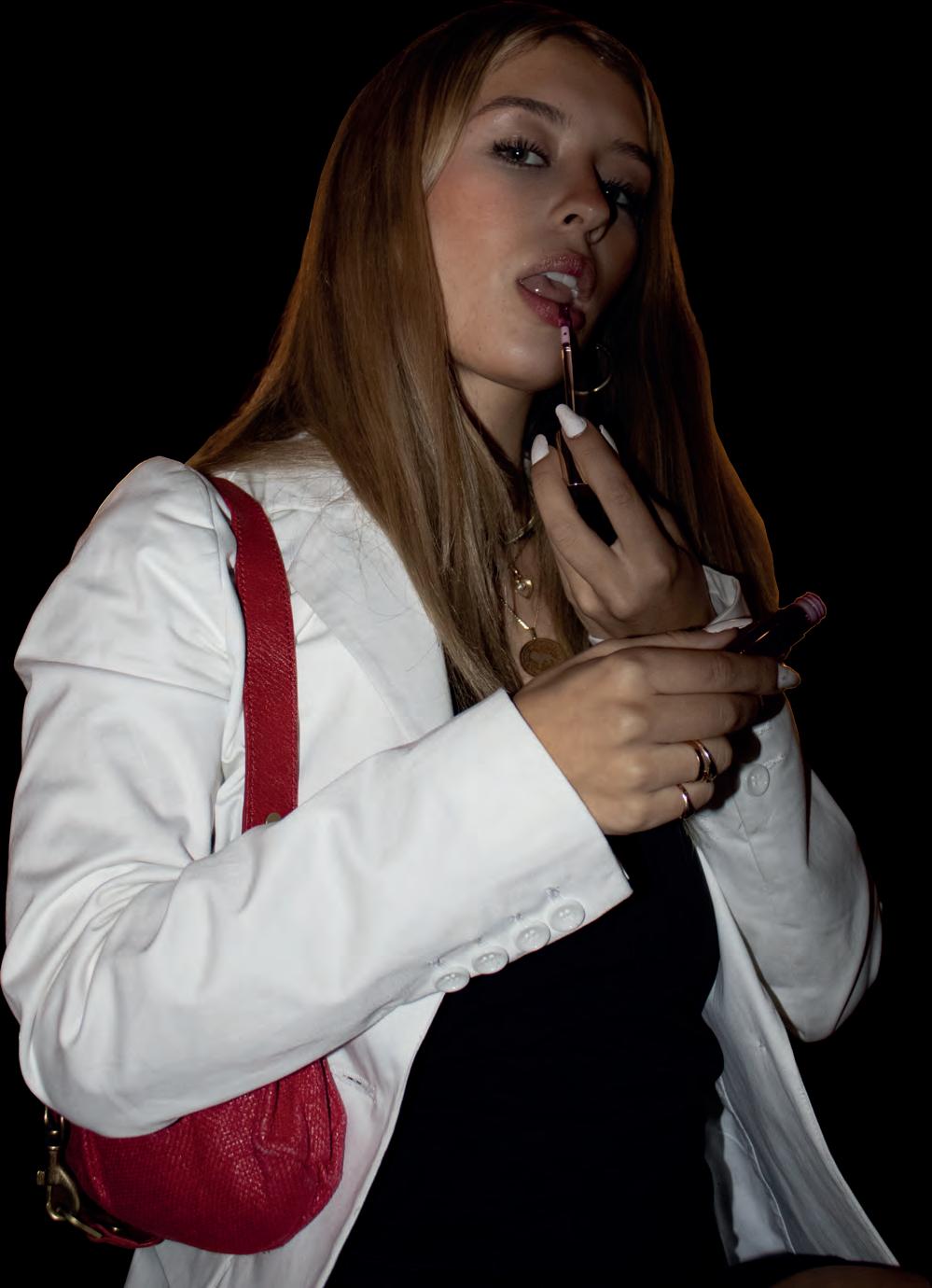 WRITTEN BY: MOLLYREID
WRITTEN BY: MOLLYREID
CONNECTINGTHEBRIDGEBETWEEN
exploration.Whichone ismorefashionablyeffective?Culturally acceptable?Comfortable?Fun?
prevails?Which
thantheother.
The start of a trend feels like a surprise – not only does the element of surprise captivate the attention of the casual observer, but it also results in media new “it” product, the trend is already over, and the fashion is over-exposed. Another issue is sometimes what’s trending doesn’t really ft your personal style, making it infuriating when you want to be on top of it.
excitement. Recently, I’ve observed that the trend cycle has been moving exhaustingly fast. So much so that by the time you’ve got your hands on the
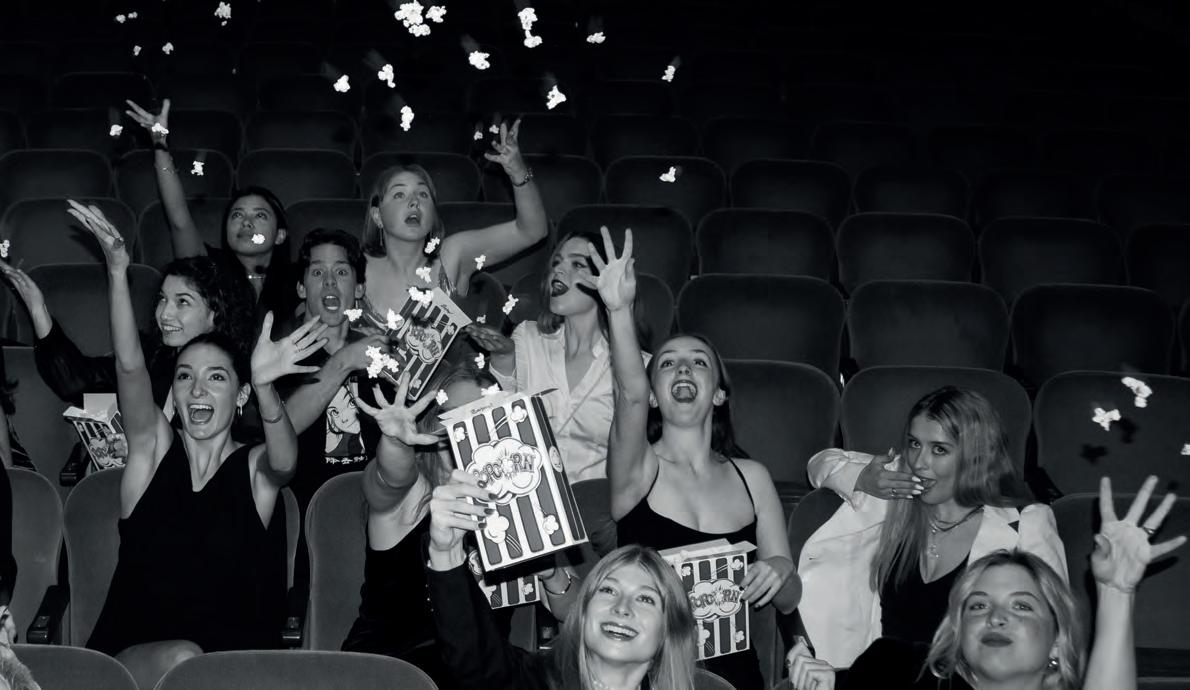
One of the most timeless closet staples someone can own are pearls. Not only are there multiple lengths and styles, but they’re easily convertible from classy and elegant to grungy and loud, while also fnding themselves as a piece that can be worn every day. Pearls are one of those accessories that you see your mother or your grandmother wearing, and you may feel like it’s too mature for your personal style. But because of their ability to sit outside the common silver or gold jewelry pairings, you may fnd yourself reaching for them soon enough.
Claiming, “I have nothing to wear!” while looking at a closet full of clothes is something many of us have experienced. When I fnd myself here, my eye moves towards the basics, timeless items that aren’t as eye-catching to the average passer-by, but still allow for a more classic and fairly easy way to present my personal style. Timeless items—although often appearing simple and effortless—can be effective and fattering. It’s not always easy to fnd these items in the current fashion climate, with so many loud colors and patterns, but it can be
exciting to incorporate these closet basics into your
Contrary to the timelessness of pearls is a trend I have yet to explore, low-rise jeans. Considered the epitome of fashion in the early 2000s, we fnd
them reviving as a trend, which seems to be consistent with most of the styles of that decade. The stark contrast of their ft to the more timeless pant – a higher waist and wider leg opening, giving the wearer a cinched waist and longer looking legs
– defnes their ability to create a fashion statement by elongating the torso. Using low-rise jeans in an outft can create a statement, often a bold one, because of the jeans’ ability to change how the wearer is seen. Bold items such as this are more trendy than timeless.
40
Bold fashion pieces such as animal prints may also be placed into the trendy category. Mainly because they are often used incorrectly. Animal prints, because they’ve been in the fashion industry for such a long time, have already been through the height of the moment. I mean, we’ve all seen “The Jersey Shore.” I would confdently say that animal prints had their prime moments during the height of this television show. When was the last time you saw someone wear a leopard print and thought they’re outft was something you’d want to replicate?
A controversial but tactical timeless piece is leggings. Although not the most fashion forward item in our closets, they are so often used that their necessity deems them a quality basic. They are an extremely convertible piece of clothing, whether it be for working out, wearing with a casual sweater, or even under a skirt or dress. Leggings have become a timeless staple and an item of clothing that many, including me, wouldn’t know what to do without. Turtlenecks
also fnd themselves to be on par with leggings as a necessary timeless piece. An easily layered
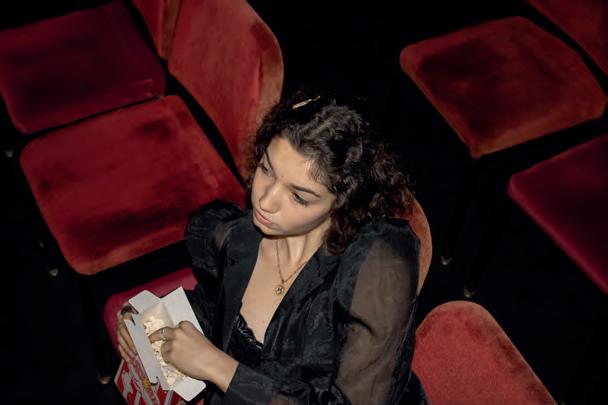
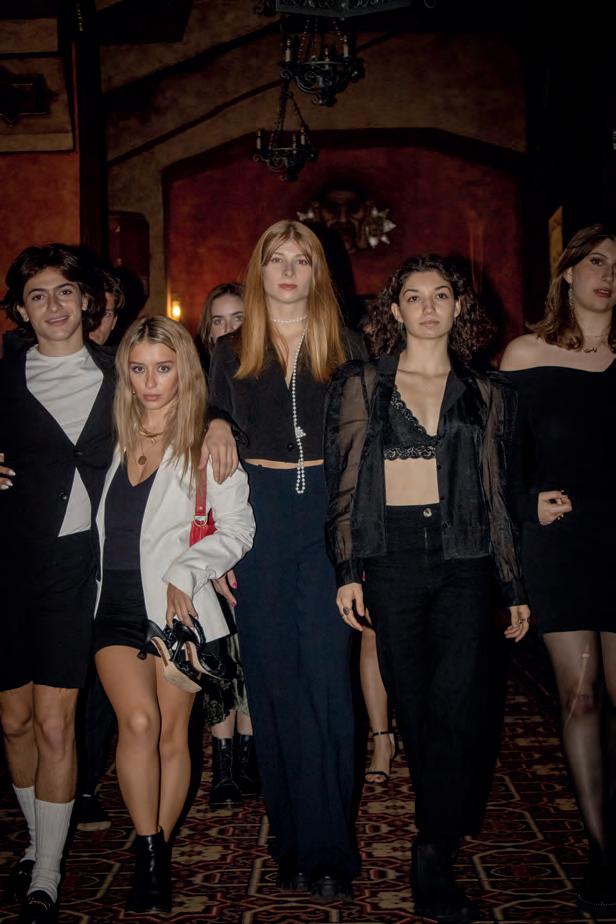
item, and often a subtle nod to the season, they have the ability to take a boring outft and add a dash of a little something special making any outft a little more fun. Both leggings and turtlenecks fnd themselves as an undeniably useful and versatile piece of clothing allowing them to be timeless in their ability to be harnessed for both subtle comfort and inventive layering.
Similarly, I feel that any garment made of leather, whether it’s real, vintage, or faux is something that cannot be replicated by another fabric; it’s classic and timeliness. Leather has been around forever, quite literally. A quick Google search says that it was around 5000 BC when people started wearing clothing made of leather. It has not gone out of style for 7,000 years -- pretty damn timeless! Leather shoes, jackets, and pants elevate any style you’re trying to achieve, and add such an interesting, versatile staple to your everyday look.
Although every garment made of leather may be timeless, cowboy boots may stray too far. Their increased use has led to an over saturation on social media and has moved from an item of western homage to more of a mockery. This item has evolved and is still used as a necessary piece in some wardrobes, but the
41
increase in social media madness may ultimately distinguish the use of the item in fashion. On trend with cowboy boots, platform shoes also fnd
themselves as a trendy piece. These shoes have had their highs and lows in the fashion industry and
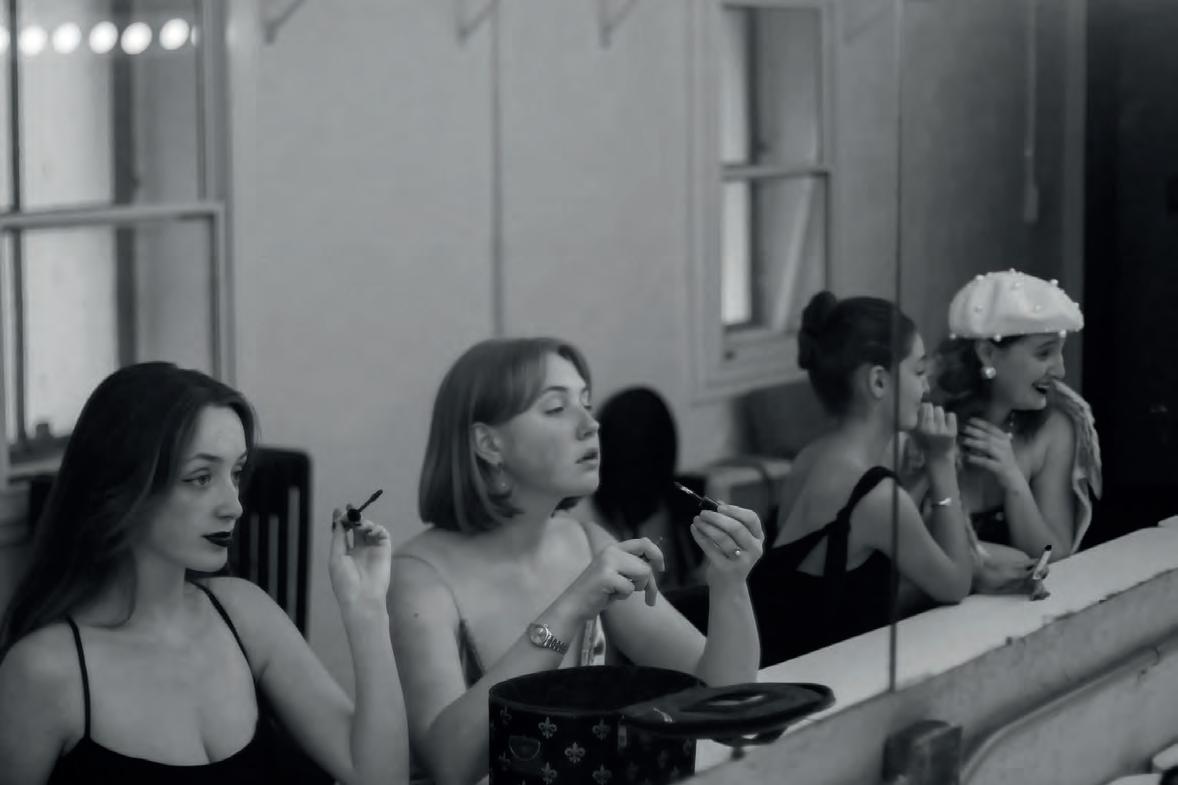
have never really hit a consistent high. Don’t get me wrong, a classic Doc Martin can do so much for your outft, but I’ve felt that recently, they have although deceptively common, fnd themselves to be a trend.
sunnies that add a certain sense of power to your everyday look. Think Jackie Onassis. These sunglasses have been making reappearances due to infuencers like Emma Chamberlain or even Kendall Jenner. I think that whether you’re wearing vintage sunglasses or Ray Bans, you’re making a classic fashion move and I therefore applaud you.
somewhat gone out of style. Both these shoes,
Sunglasses are a timeless item that I think has evolved recently. When I say sunglasses, I don’t mean the tiny frames, fame shaped, or heart shaped sunglasses that you see on social media. Those, in my opinion, have been out of style for a while now. When I say sunglasses, I mean the thick framed, hiding-from-the paparazzi, incognito
There is no real winner between the interest in timeless versus trendy. Timeless styles, although strong on their own, are easily elevated when partnered with trendy items. Zip up a classic pair of leather pants, throw on some chunky platform shoes, dig out your dad’s old white button-up, and accessorize with some badass pearls to create a classic outft with a trendy twist. Who knows? You may be onto something.
42
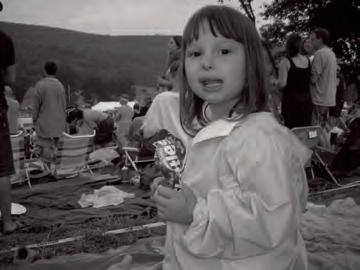



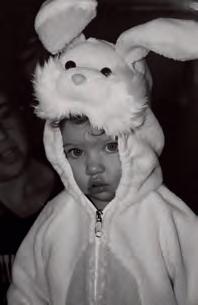


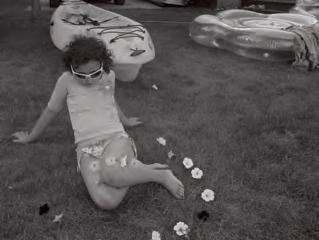




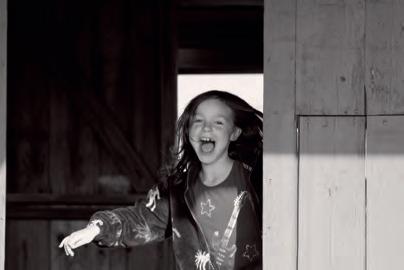
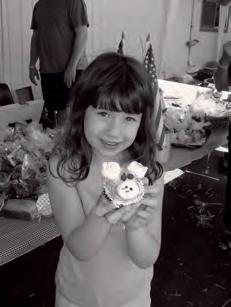

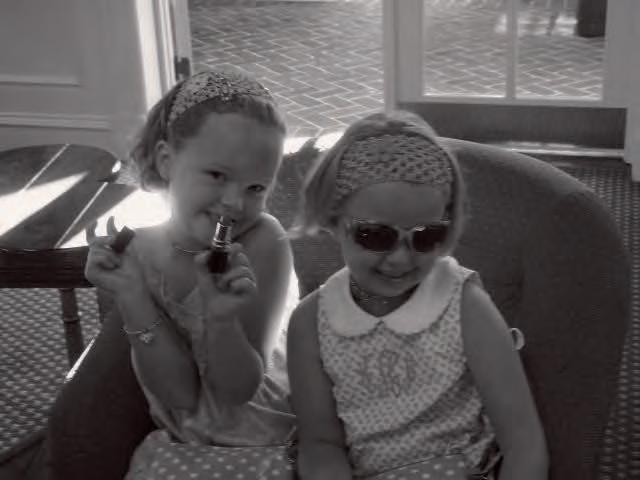


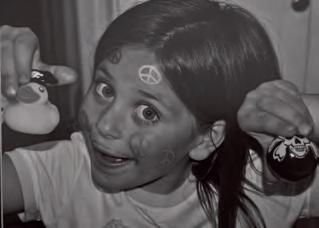
KendrickHawkins Editor-in-Chief MalachiWard DirectorofStyling Directorof BiancaFalcone CreativeLayout EllaRudisill DirectorofCreative Layout Heather EventsCoordinator Evered Director DevonMiddlebrook Finance Directorof TaliahBroadus PublicRelations WesolyHanger HeadPhotographer Layout IsabellaWelch Directorof GemmaSavitz-Vogel PublicRelations MollyReid Photographer HaleyLowenthal Photographer VictoriaEdwards EventsCoordinator Directorof RoseGruber Diversity, Equity,andInclusion Layout Tsiali Panagiota Layout CharlottePodeszwa Layout SophieZakin LilyWeisbart Layout Layout ChloeSchlesselman
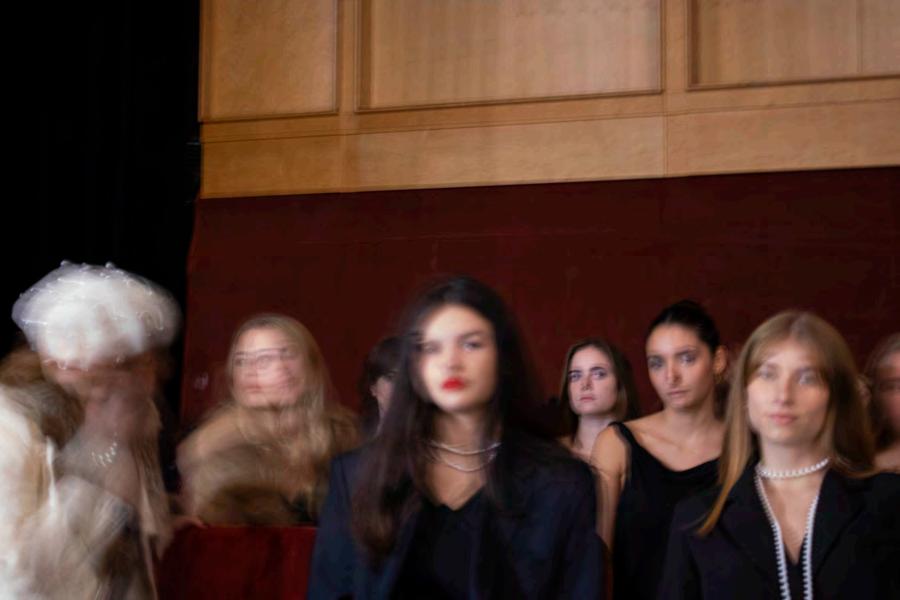











 By: CharlottePodeszwa
By: CharlottePodeszwa







 ByStephanieRuiz
ByStephanieRuiz




 Photos by Santiago forVogueMéxico Sierra Soler
Photos by Santiago forVogueMéxico Sierra Soler







 DragBall,1988. Harlem.
DragBall,1988. Harlem.

















 BarbaraBordnick
BarbaraBordnick


 WRITTEN BY: MOLLYREID
WRITTEN BY: MOLLYREID

























